Amazing Islands
Best Time to Visit
Weather & Climate
Scotland's Airports
Places to Visit
One Week in Scotland
Best Beaches
Scenic Road Trips
Top Castles to Visit
Glasgow Guide
Dundee Guide
Aberdeen Guide
Fort William Guide
Scottish Highlands

The Scottish Highlands: The Complete Guide
Chris Gorman/Getty Images
The Scottish Highlands belong on every traveler's bucket list, but, in particular, the beautiful region of Scotland is coveted by nature lovers and outdoorsy adventurers. Located in the western and northern areas of Scotland, the Highlands feature unparalleled scenery, from towering mountain ranges to sweeping, green countryside to sparkling lochs. It's the sort of place that feels otherworldly, especially when you leave the beaten path and get into the more remote areas of the Highlands. It can be difficult to decide what to include on a Highlands itinerary, but you really can't go wrong, especially if you give yourself plenty of time to explore.
The Top Destinations in the Scottish Highlands
The Highlands represent a massive area of northern Scotland, including numerous towns, national parks, and wilderness areas. Deciding what to see can be intimating at first, especially when looking at a map, so it's best to narrow your visit down to a few solid destinations. While there are many places to go around the Scottish Highlands, some of the best and most memorable include Cairngorms National Park, Loch Lomond and Glencoe.
Cairngorms National Park
Cairngorms National Park is one of the most famous areas in the Highlands, boasting magnificent views you won't forget. The vast area is the largest national park in the U.K. and welcomes both day-trippers and those who hope to spend a few days (or even a week) exploring its lakes, mountains, and natural formations. Camping is particularly popular in Cairngorms and there are numerous campsites, for both tents and camper vans, throughout the park.
Cairngorms National Park isn't just for hiking and camping, either. The park features numerous museums, historic sites, and even castles, all of which should be part of your itinerary. Look for Balmoral Castle, Ballindalloch Castle, and the Highland Folk Museum , which showcases living history.
Scotch lovers shouldn't miss the Glenlivet Distillery , where the distillery showcases whiskey-making and even includes a tasting on its tours (which should be booked in advance).
Isle of Skye
Located off the west coast of Scotland, Isle of Skye is famous for its rugged yet picturesque landscapes and its beautiful coastline. There are numerous villages throughout the island, including Portree and Dunvegan. Many visitors come to Isle of Skye to spot its varied wildlife and enjoy its iconic hikes. Isle of Skye is best visited during the warmer months, when you can better enjoy the hiking trails and beaches.
There's a lot to see and experience on Skye, so it's best to stay at least a few days, whether it's in a holiday home rental or a campsite. Check out the Talisker distillery and Dunvegan Castle and Gardens , which has been the ancestral home of the Clan MacLeod for 800 years. Many visitors also opt to take a boat tour around the island, if you'd like to join one look for tours leaving from Elgol or Portree. If you don't have a car or a rental, stay in one of the main areas, like Portree, but the more remote destinations on the island are recommended for a quiet, nature-focused getaway.
Inverness and Loch Ness
The city of Inverness, located in the far north of Scotland, has a sizable airport and a bustling downtown with nice restaurants and shopping areas. The city is also the gateway to Loch Ness, a beautiful destination that has far more to offer than just its mythic monster. Hiking, fishing, cycling, and skiing are all popular activities in the scenic areas around Inverness, but there's also plenty of history, from Inverness Cathedral to Fort George.
To best explore Loch Ness, book a boat cruise. After the cruise pay a visit to the Loch Ness Centre and Exhibition . Families will also enjoy Nessieland, a small theme park with play areas and attractions based on Nessie herself. Adventurous travelers should rent a bike and ride the Loch Ness 360° Trail , which circles the entirety of Loch Ness.
Fort William and Ben Nevis
Found in the western part of the Scottish Highlands, Fort William is a town best known as the gateway to Ben Nevis, the U.K.’s tallest peak that was once an active volcano, and the Glen Nevis valley. While many visitors will want to come during the summer for hiking and outdoor activities, the mountains also boasts great skiing at Nevis Range during the colder months. There area has numerous hikes, in varying degrees of difficulty, and many people attempt the steep trek to the top of Ben Nevis via one of its two faces.
Fort William itself is a small town with nice bed and breakfasts and holiday cottages, and there are also several surrounding villages to explore. There are also great pubs and seafood restaurants in the area, including the Ben Nevis Inn, located at the base of the mountain's footpath.
TripSavvy / Jess Macdonald
Eilean Donan Castle
Eilean Donan is a small island in the western highlands where Loch Duich, Loch Long and Loch Alsh meet, and standing atop the island is the iconic Eilean Donan Castle. It's a place you'll recognize from a lot of movies, including the "The World Is Not Enough" and "Highlander." The historic castle, which dates back to the 13th century, welcomes visitors year-round (although opening hours vary by season). Visitors can also book into the castle's vacation cottages. The castle is located near the village of Dornie, another scenic spot to visit during your journey.
Glencoe, found in the Glencoe valley, is best known for its walking trails and the Glencoe Folk Museum , which showcases 18th-century heritage as well as the history of the Glencoe massacre of 1692. The winter brings skiing and sledding at Glencoe Mountain, while spring and summer invite visitors to bike, go sea kayaking and dip into Lochaber Geopark .
Don't miss Glencoe Lochan, a forested wilderness area north of Glencoe's village, and nearby Loch Leven, where you can follow the Loch Leven Heritage Trail around the lake. Hop a boat or kayak to the uninhabited island of Eilean Munde, the burial place of Glencoe's Macdonald clan, in Loch Leven.
Trossachs National Park and Loch Lomond
The famed Loch Lomond can be found in the Trossachs National Park , a vast park known for its amazing views and water sports. Camping is popular in the Trossachs, with wild camping permitted if you want to go more remote. There are also lots of trails for hiking and cycling, and there are six long-distance trails that make their way through the park (each is about 25 miles long and takes several days to complete). Golfing is also popular, with numerous courses available for visitors, including the Buchanan Castle Golf Club and the Aberfoyle Golf Club. At Loch Lomond, look for the Luss Heritage Path, which traverses the countryside as well as the ancient village of Luss.
There are many towns in the Trossachs, many of which lay alongside one of the lochs. Look for St. Fillans, on Loch Earn, and Callander to get a taste of small-town Scottish life. While there is some public transportation around the park, it's best to rent a car or camper van when exploring Trossachs National Park.
Things To Do in the Scottish Highlands
There's a lot to see and do in the Highlands, some of which is dependent on what time of year you visit. Most travelers prefer to tour around the Highlands during the spring, summer, or early fall to take advantage of the nice weather and long hours of daylight. Whether you prefer to explore national parks, uncover historical sites or hang out in the town pub, there's something to do for every type of visitor, including families with kids.
- Hiking is one of the most popular activities in the Highlands, particularly in the national parks and around Glencoe. Be sure to look for advice from the local visitor's center on the best trails for your ability level and be mindful of any weather conditions. Scotland also features numerous long-distance walking trails, in case you want to make a several-day trek through the wilderness.
- Camping is another highlight of the area, especially since Scotland allows wild camping (which means you can camp anywhere, as long as you follow the rules of the particular area). Many travelers opt to camp for a few nights or even their entire trip, so make sure you have the right gear and you get any necessary permits ahead of time.
- Golf courses are a dime a dozen in the Highlands and many boast impressive views. Look for famous courses like the Castle Stuart Golf Links and the Dragons Tooth Golf Course.
- Outdoor activities like kayaking, fishing, cycling, and rock climbing can be found throughout the Highlands, and many towns have shops offering boat and bike rentals, as well as fishing gear rentals.
- Scotland's history dates back hundreds of years, which is evident in the numerous historical sites and castles around the Highlands. You could make an entire itinerary of just castles, which can be found all over the area, often in remote locations. Do some research in advance to ensure the sites are open during your visit as many involve long drives to access them.
- The Highlands are also known for their whiskey distilleries. Most of the 47 local distilleries welcome visitors, including the area's oldest, Glenturret at Crieff and Balblair at Tain. Those interested in malt whiskey should embark on the Malt Whisky Trail, which features eight distilleries around Speyside.
How To Get There
The Highlands are relatively remote and quite vast, so the best way to visit is via rental car. International travelers can fly into Glasgow or Edinburgh, and rent a car there before traveling north. Alternatively, visitors can fly into Inverness, a smaller airport in the north of Scotland, and then drive to their chosen destination. You can also opt for a camper van to help simplify your travel as wild camping is legal in Scotland.
Those looking for a more scenic route should book a train journey from Glasgow or Edinburgh, both of which are three to five hours away from various Highlands destinations, including Fort William and Aviemore (which offers access to Cairngorms). The journey from Edinburgh to Fort William includes the famous Glenfinnan Viaduct and picturesque scenery included in the "Harry Potter" movies as the Hogwarts Express makes its way from London to the wizards' school. Use the Trainline website to find the best route when booking a train. Buses are also available from Glasgow to Fort William or Glencoe.
The 12 Best Road Trips in Scotland
Top 8 Things to Do in Fort William, Scotland
The Top 15 Places to Visit in Scotland
Top 10 Great Scenic Drives in Britain
The 10 Best Day Trips From Glasgow
Glencoe: Planning Your Trip
One Week in Scotland: The Perfect Itinerary
Loch Lomond & the Trossachs National Park: The Complete Guide
Fairy Pools in Scotland: The Complete Guide
A Guide to Airports in Scotland
Weather in Scotland: Climate, Seasons and Average Monthly Temperature
The Best Time to Visit Scotland
15 Most Amazing Scottish Islands to Visit
Cairngorms National Park: The Complete Guide
The Best Hikes in Loch Lomond & The Trossachs National Park
12 Best Beaches in Scotland

Tourist Advice for Visitors to the Scottish Highlands
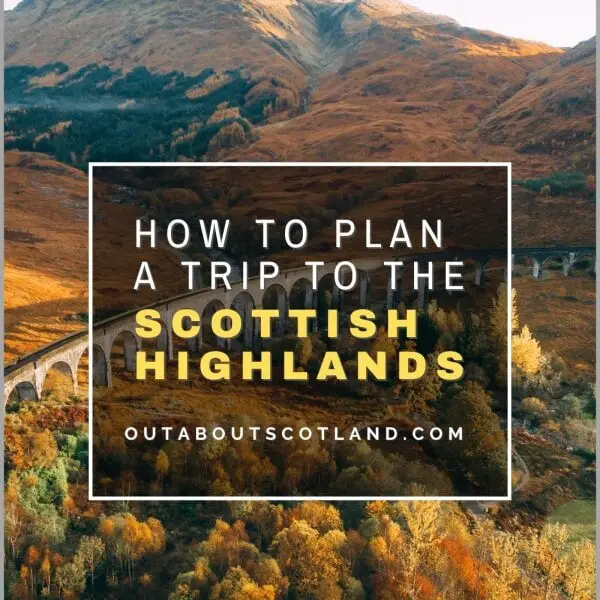
The Scottish Highlands are a wild and mountainous region situated in the northwest of Scotland. Although the region covers 9,906 square miles, it’s home to just 600,000 people, making it one of the most sparsely populated areas in Europe.
Visitors to the Highlands can immerse themselves in a landscape of serene lochs and towering mountains, along with some of Scotland’s largest forests and a rugged coastline that’s rich with wildlife.
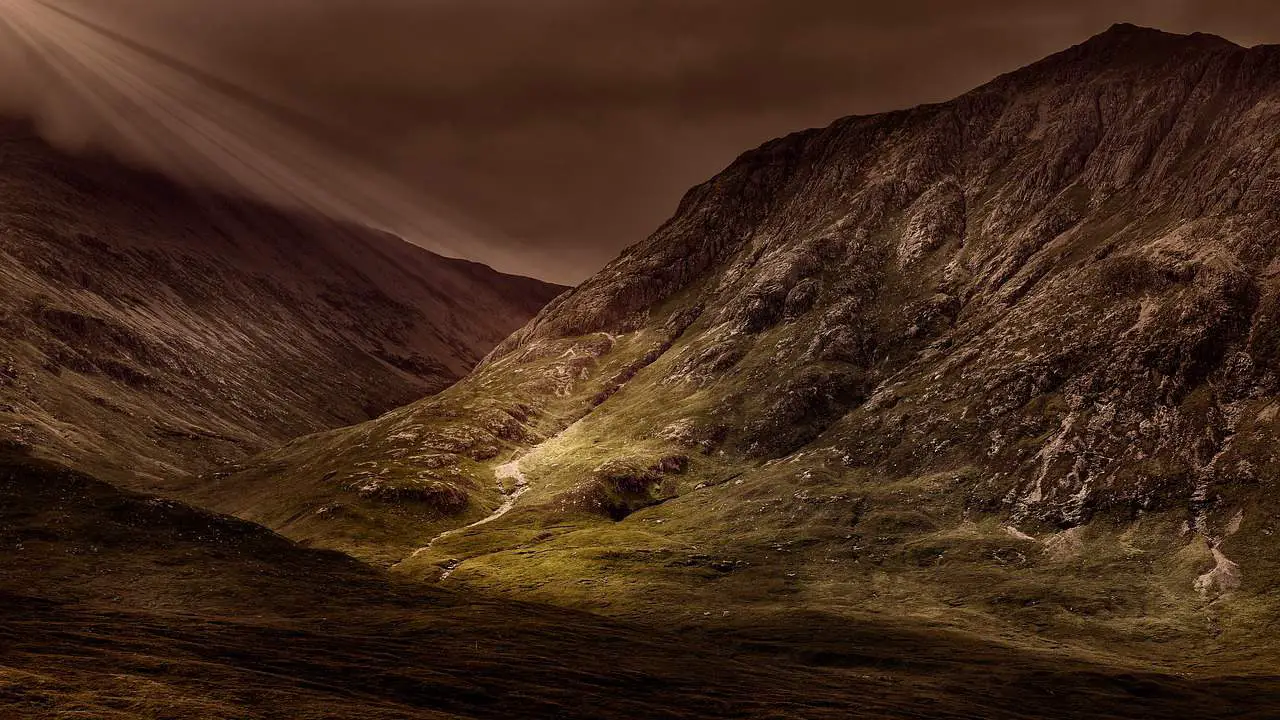
Touring the Scottish Highlands
There has been a recent uptick in the popularity of private, small-group tours of Scotland among retirees, lone travellers, and middle-aged couples.
Smaller buses are a more comfortable and convenient alternative to the massive coaches of yesteryear. If you’re uneasy riding with a big bunch of strangers, you might like to choose smaller buses that seat no more than sixteen passengers rather than standard-size coaches, which may hold as many as fifty.
You’ll get to see parts of Scotland that passengers of cumbersome forty-foot vehicles never get to see thanks to the fact that these short-wheelbase vehicles can easily navigate the country’s small, winding roads.
If you’d like to visit the Scottish Highlands on a mini-coach tour I highly recommend Rabbie’s. This tour operator has been running since 1993 and exclusively uses small tour buses in groups of a maximum of 16 people so you’re guaranteed to make new friends on each trip.
Rabbie’s drivers are experts in all things Scotland so you’ll hear a few fascinating – and hilarious – tales as you make your way around the most beautiful parts of the country. To book a sightseeing tour of the Scottish Highlands or to find out more information about the different tours you can take around the Highlands, check out the Rabbie’s website .
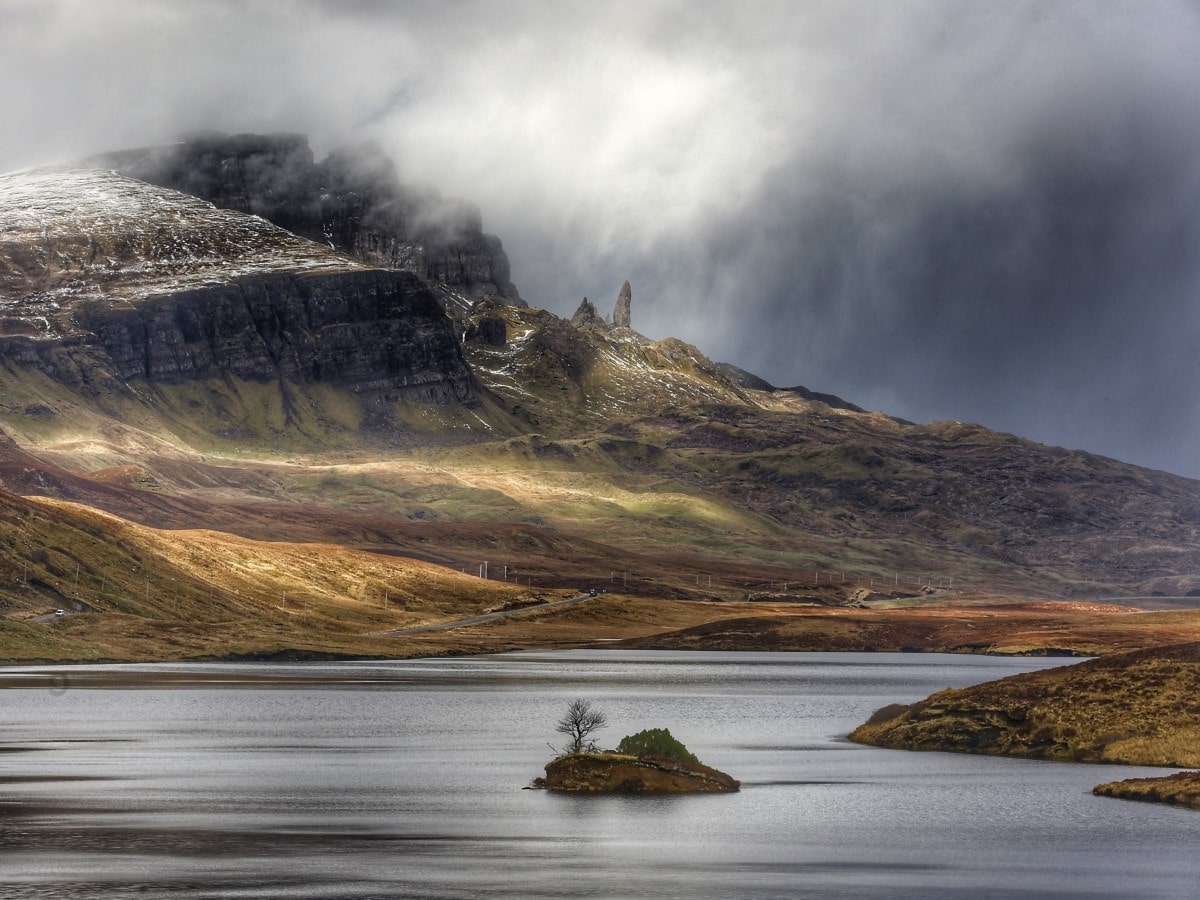
Here’s an example itinerary of what you can expect to see on a Rabbie’s tour:
West Highland Lochs & Castles 1-day Tour
- Depart Edinburgh and head in the direction of Stirling to arrive at Doune Castle .
- Visit the castle then continue through Callander to Loch Lubnaig.
- Stop at Loch Lubnaig, then drive to the Braes of Balquhidder.
- Continue to Kilchurn Castle and visit the loch and castle ruins before stopping for lunch.
- Head to Loch Awe and stop at the town of Inveraray near Loch Fyne.
- Explore the old jail in Inveraray and Inveraray Castle before continuing through the Arrochar Alps. Stop along the way for photos.
- Drive along Loch Long towards Loch Lomond . Stop at the village of Luss .
- Continue towards Stirling Castle for photos.
- Arrive back in Edinburgh.
Explore small group tours of Scotland with Rabbie’s
Where Are the Scottish Highlands?
When you visit Scotland, you basically have three options for finding places to visit. First, you can do what most people do and head to the big cities of Glasgow and Edinburgh , with the latter playing host to the majority of the best tourist-friendly experiences that the country has to offer.
Second, you can go to the Hebrides islands and immerse yourself in their vast windswept beaches, and third, you can explore what I believe is the most beautiful part of the UK—the Scottish Highlands .
The Highlands are traditionally considered to be one half of Scotland, with the other being the Lowlands, and both areas are divided by the Highland Boundary Fault . This fault line starts near the area of Helensburgh (around 40 miles north of Glasgow) and extends all the way to Stonehaven in the northeast, with much of the landscape west of the fault pushed up in an enormous rift.
This fault line is the main reason why there are so many mountains in western Scotland, which couple with millennia of ice-age glaciers carving their way across the landscape has left behind the Highland’s famously high peaks and picturesque glens.
While the Lowlands are relatively flat, the Highlands are much more dramatic – think windswept moors surrounded by vast mountain ranges and you’ve pretty much got it – and they’re very sparsely populated, having one of the lowest densities of people outside of the great plains of Russia.
It’s not quite true to say that the Highlands follow the fault line in its entirety as the boundary turns north before it reaches the east coast and then arcs back towards the city of Inverness (the capital of the Scottish Highlands) in the area of the Moray Firth .
Everything north and west of this point (including the Orkney and Shetland Isles and the Western Isles) are also in the Highlands so I think you’ll appreciate it’s a pretty big area, and one that needs a lot of prior planning if you’re thinking of exploring it.
The Highland Boundary Fault :
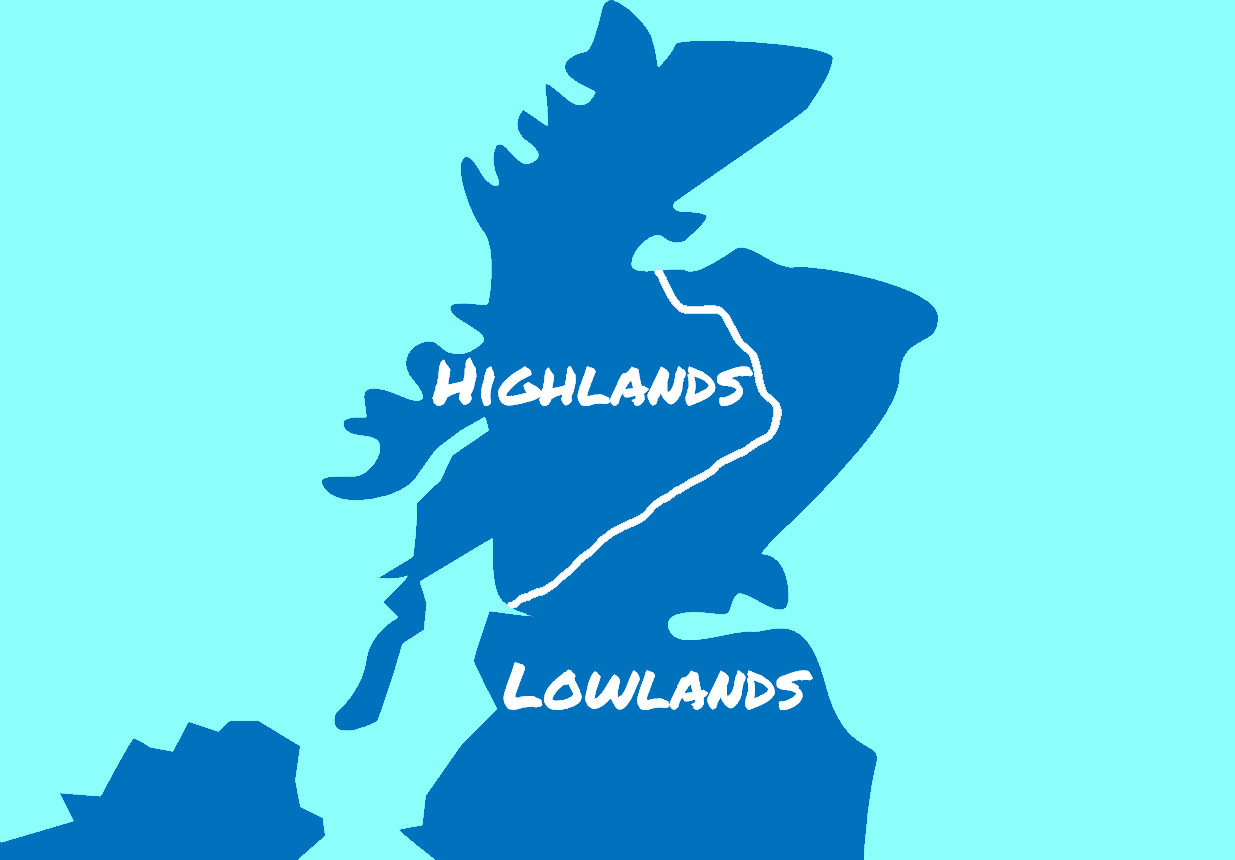
The Weather and the Best Time to Visit the Highlands
If there’s anything that will have a big impact on your decision to visit the Scottish Highlands, it has to be the weather. Unlike the cities where it doesn’t really matter which month you plan your trip for, in the wild and exposed Highlands you’ll always be at the mercy of the elements, so choosing to come here in winter could mean you’ll have a downright miserable time.
Scotland’s winters generally last from November to February, but with global warming, it seems that Scotland is experiencing far milder temperatures than it once did. That being said, once you head into the more elevated regions, you’re almost guaranteed to experience 0 °C all day every day, especially in places like Braemar (officially the coldest place in Britain), where the lowest-ever recorded temperature was -27 °C (-16.6 °F).
Bear in mind that these temperatures plummet even further when you take wind chill into consideration. If you’re thinking of exploring the Highlands in winter, remembering the effects of wind chill can literally be a lifesaver.
To calculate wind chill, multiply the wind speed by 0.7 and subtract that number from the temperature, e.g., if the temperature is 5 °C and the wind speed is 10 mph, then 5 – (10 x 0.7) gives you a wind chill temperature of -2 °C, which is a considerable difference caused by little more than a stiff breeze.
On a positive note, if the main reason to visit the Highlands in winter is for snow sports then you’ll be pleased to know that here in Scotland we have pistes that rival the alps at the Nevis Range, the Cairngorms, and Glencoe.
On average, there are 100 days of snowfall each year in the Highlands, and due to the elevation, the snow usually lasts until April (Scotland’s snow sports season generally runs from November to April). This is also something to keep in mind if you’re thinking of driving in the Highlands in the winter, as many roads become impassable for days on end.
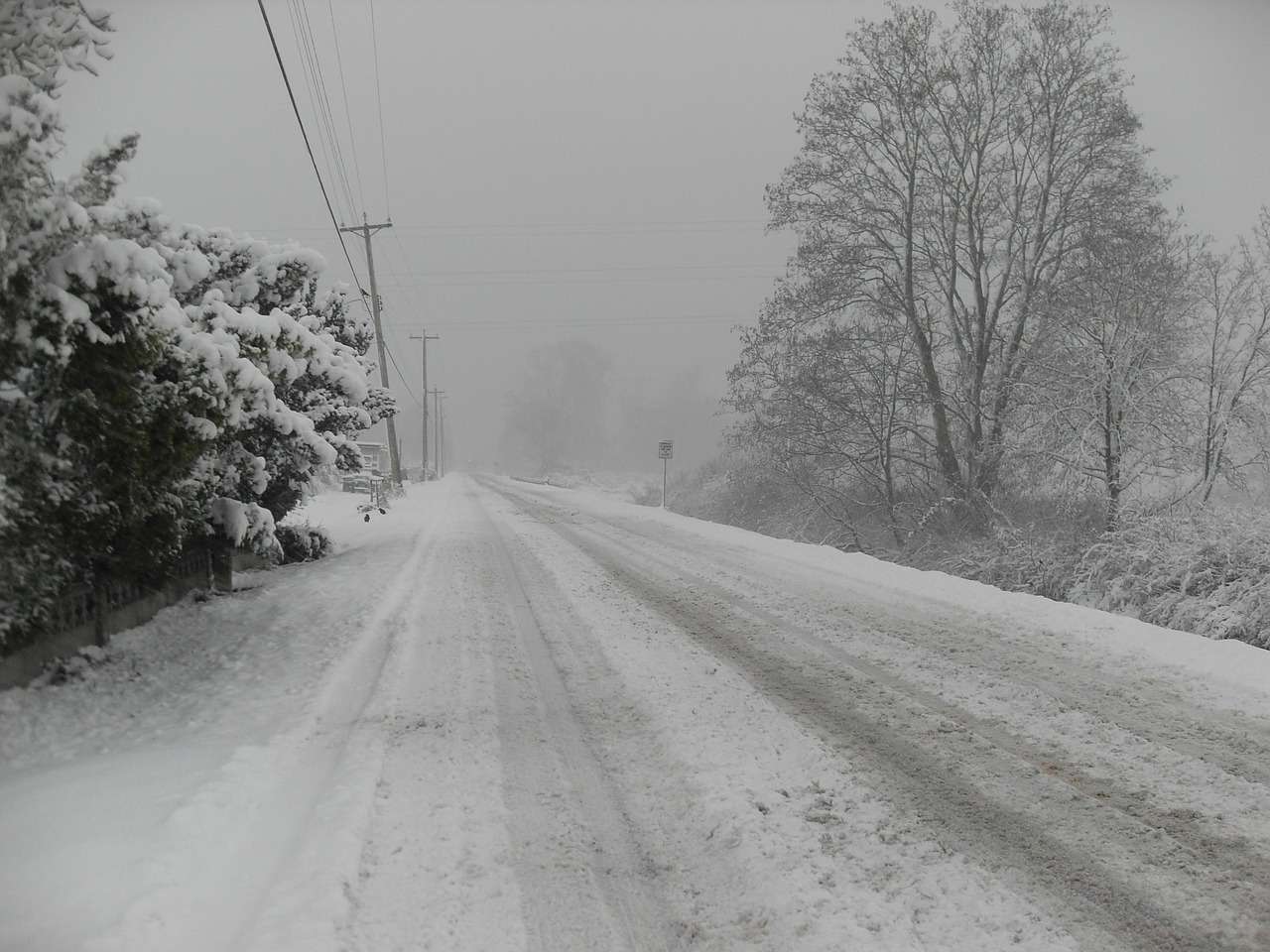
If you do find yourself driving through snow, keep an eye on the snow poles on either side of the road as they give an indication of where the road is as well as how deep the snow is. You’ll find more travel advice in this article, How to Tour Scotland in Winter which is a must-read for winter visits to the Scottish Highlands.
If winter sports aren’t part of your agenda, I would have to say the best time to visit the Highlands are the summer months (June, July, and August), as they have the longest days, the least amount of rain, and the highest temperatures.
I’ve compiled a few averages in the table below which shows the differences in Highland weather between January and August.
Midges in the Highlands
There’s one big problem with visiting the northwest of Scotland, and it’s something that can ruin your entire summer holiday: midges. These tiny biting insects are prevalent throughout the Highlands, where they like to hunt for food anywhere that’s damp on days that are cool and have wind speeds under 5 mph (8.05 km/h).
On their own, these 1-3 mm insects are nothing more than a minor irritation, but they swarm in their thousands and are irresistibly drawn to human beings whose blood is a rich source of protein for them.
If you get stuck in the Highlands where there are midges (an estimate of their numbers is 181 Trillion ) you’ll find it can be an unbearable experience. They tend to emerge from May to September, but that can change with a number of factors, including how cold the preceding winter has been and how warm it is later in the year.
My advice to combat these biting horrors is to take a look at this article: Avoid Midges in Scotland , and buy a bottle of Smidge anti-midge lotion (Amazon).

Essential Gear to Pack for the Highlands
A visit to the Highlands can be an unforgettable experience, especially if you head into the mountains where it’s possible to enjoy an all-day hike and not see another person all day. If you really want to escape the hustle and bustle of the city, then the Highlands of Scotland need to be at the top of your list of places to go.
While these remote landscapes are undeniably beautiful they can also be deadly, with facilities that are few and far between, large areas of impassable bog and moorland, ridges with sheer-sided faces, and weather that can – and will – change to the extremes at the drop of a hat.
Obviously, you’ll have to pack extra gear in winter compared to summer, but there are a few essentials that you should keep with you at all times for no other reason than safety should you ever find yourself lost in the wilds of the Scottish Highlands.
This is what I keep in my backpack as a minimum, even in summer.
Please note, the following links are Amazon affiliate links.
1: Backpack waterproof cover . You will get caught in the rain at some point in Scotland, and there’s nothing worse than reaching into your backpack only to find a puddle of water at the bottom. Prevent water from soaking your clothes and expensive gear with one of these cheap waterproof backpack covers.
2: Pac-a-mac . They’re not exactly the height of fashion, but foldable waterproof jackets are unbelievably handy for coping with Scotland’s changeable weather. Roll it up and pop it in the bottom of your bag for those days when it’s too warm to wear a thick jacket.
3: Base layer . These thin long-sleeved shirts are designed for sports, but I’ve found them ideal for: A: an extra layer to pull on top of my T-shirt if it suddenly gets chilly; and B: something to cover my arms if there are too many midges about. Base layers roll into a tiny size and weigh next to nothing, so it’s worth keeping one in your bag at all times.
4: Convertible trousers . As I already mentioned, Scotland’s weather is changeable throughout the year so you’ll find yourself constantly veering between being too hot or too cold. One thing that helps enormously is wearing convertible trousers that have legs that can be quickly zipped off, thereby turning them into a pair of shorts.
5: Mobile phone with an OS Maps subscription . If you’re walking in the Highlands a map is essential for your safety. While waterproof paper maps and a compass are still the best options, if you’re on a short sightseeing trip, I highly recommend using your phone and the OS Maps app instead.
With the OS Maps app,, your phone acts as a GPS receiver and overlays your position onto a highly detailed map of the Highlands, and it even shows you which way you’re facing.
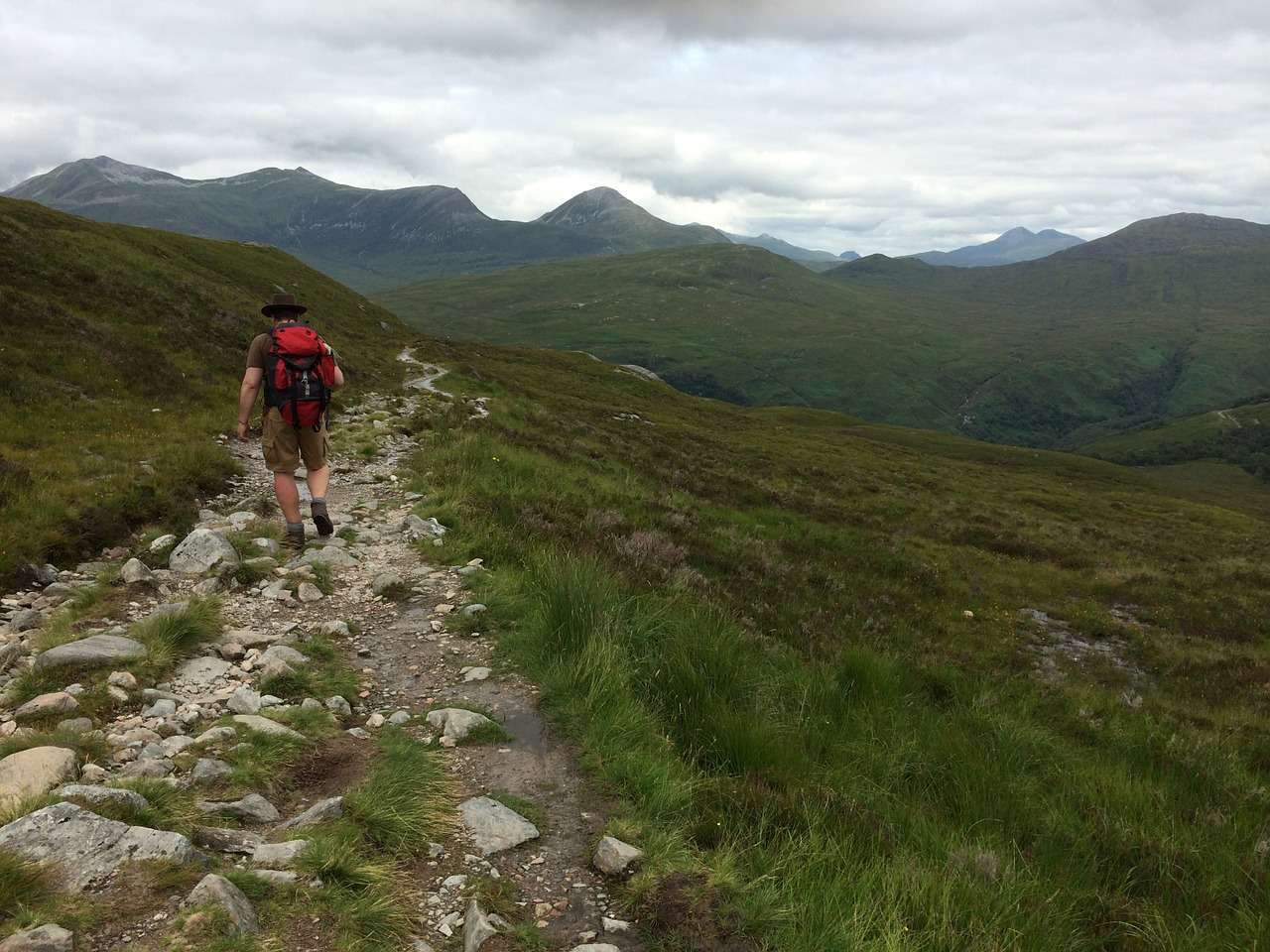
What to Pack for a Winter Visit to the Highlands
If you visit the Highlands in winter there will be a few additional items you need to take with you, primarily to keep you warm but also to keep you on track when snowfall covers the ground. The following is what I’ve whittled my gear down to after years of exploring the Highlands in winter:
1: Wrap up warm with several layers of clothing, and wear a sweat-absorbing base layer along with a rain and windproof jacket. You’ll lose a lot of heat from your head, feet, and hands, so always make sure you have a woolly hat, gloves, and thick socks to keep your extremities toasty.
2: I can’t overstate how important good-quality boots are in Scotland. Get a pair that has good grips (Vibram soles are best) and is waterproof, and make sure they have supportive ankle protection. I personally swear by Berghaus boots, as although they’re a wee bit more expensive, they last much longer than cheaper brands, plus they’re supremely comfy.
3: Pack high-energy food and drinks to replenish the energy you’ll be burning to keep warm in the cold. With regard to water, bear in mind that you should take 2 litres per person per day, and each litre weighs 1 kg. I take two bottles on my winter walks: one insulated Thermos flask for a cup of hot tea down the road, and a tough metal water bottle to keep me hydrated.
4: You’ll need somewhere to pack all that equipment away so a backpack isn’t just handy, it’s essential. The majority of people don’t need a top-of-the-range pack for short walks, so if you’re only visiting the Highlands on a day trip, you’ll be fine with any rainproof backpack costing under £30 from Amazon.
This article will help you choose a budget backpack: The 5 Best Lightweight Backpacks to Use in Scotland , which lists small backpacks that are perfect for a brief sightseeing tour of the Highlands.
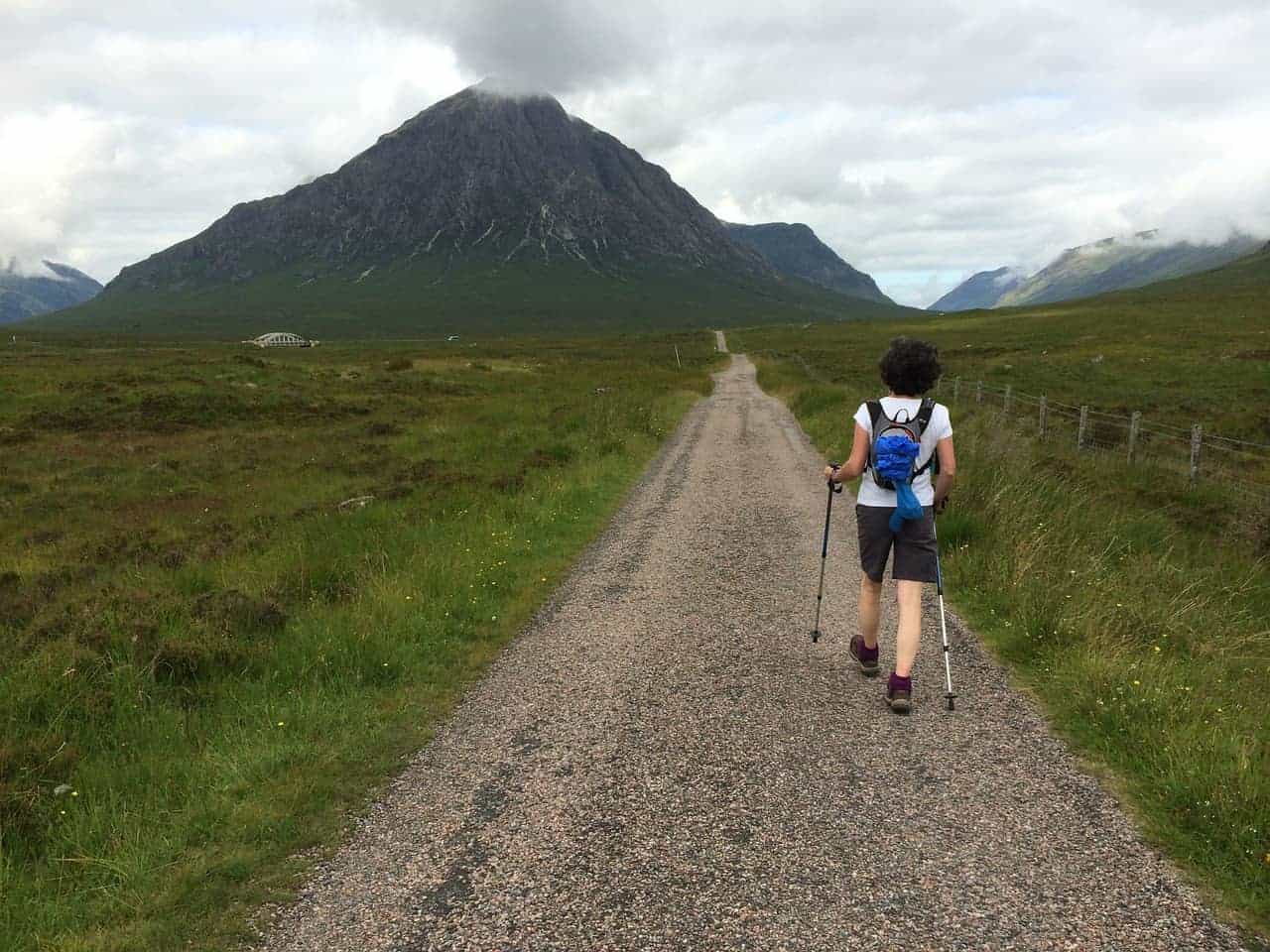
5: Take walking poles. Not only will they help you balance on slippery surfaces but they’ll allow you to poke the ground in front of you so you don’t end up falling into a snow-covered hole.
6: Take a map and compass and learn how to use them. After a snowfall, the landscape can change dramatically, and it’s easy to lose your bearings. Ordnance Survey, which offers a selection of extremely robust, waterproof maps, produces by far the best maps.
The main reason to use a paper map instead of a mobile phone app is that you never need to worry about battery life, which is a serious consideration on a multi-day hike.
Buy OS Landranger maps direct from Ordnance Survey.
7: Become familiar with your route before you leave and stick to it. One of the main reasons winter hikers get lost is because they suddenly decide to take a different path and then find themselves unable to get back onto their pre-planned track.
If you want to keep costs down the Walk Highlands website is a fantastic resource for walking routes in Scotland, and Google Maps is very handy as a GPS – but make sure you have a power pack in your bag as a backup.
8: If you happen to find yourself lost in the middle of nowhere in the winter, there’s one thing that could mean the difference between life and death. That ‘thing’ is Scotland’s network of bothies, which are weatherproofed huts located in the remotest regions of the country.
Bothies are always unlocked, and they’re free to use, with the only requirement being that you leave them clean and tidy after you’ve used them. I recommend getting this guidebook for finding bothies in the Highlands: The Scottish Bothy Bible .

Where to Stay in the Highlands
Visiting the Highlands is different from visiting the rest of Scotland for many reasons, not least because it’s such a vast area with towns and villages spread miles and miles apart. In fact, Highland settlements are so spread out that some areas have fewer people than the Steppes of Russia!
That means tourists can have a wonderful time exploring the great outdoors in peace and quiet, but it also means it’s very difficult to find accommodation.
While you could pack a tent, you’ll have to brave the midges in summer and it will be absolutely freezing in winter. Camper vans are an option, but unless you already own one you’ll have to pay upwards of £1000 per week for a rental.
That leaves hotels and B&Bs, which are probably best for the majority of people travelling to the Highlands. Because there are so few of them and because they’re so popular, it’s very important to book your accommodation well in advance in order to secure a room, and from personal experience, I suggest booking at least 6 months beforehand if you’re planning a summer trip.
One thing to be aware of is that hotels ramp up their prices during the tourist season and even more so during the school holidays, so by planning a little, you could save 50% or more by simply adjusting the weeks of your stay.
The following is a list of more tips that will save you money when booking your next hotel in the Highlands of Scotland:
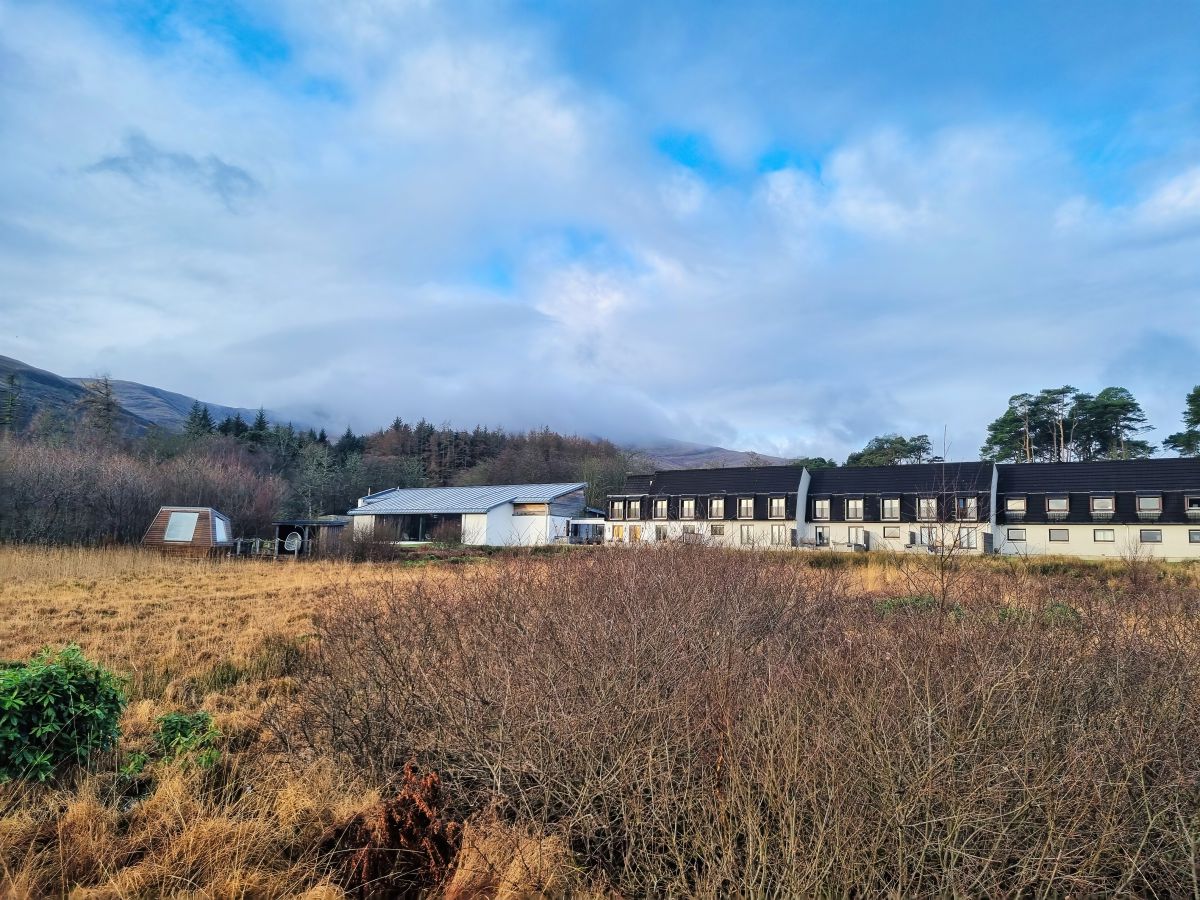
1: Although the cheapest time of year for hotel rooms is winter, in some places, like Inverness, the prices will ramp up again the closer you get to Christmas due to the Christmas markets and festivals. If you’re after a cheap winter holiday in the Highlands, check the prices in early January, when hotels are desperate for business.
2: Two suggestions for saving money on chain hotels like Marriott are to book via their own website, which is often cheaper than price comparison websites, and join their loyalty points scheme while you’re there. Most of these schemes build points for each stay, which you can later redeem for rewards such as a free meal in the hotel restaurant or a free overnight stay.
3: Hostels are by far the cheapest option for cheap accommodation in Scotland, and the days of sticky carpets and cold, dingy rooms are long gone. Most even offer single rooms with an en-suite bathroom these days. In Inverness, take a look at Bazpackers, and in Fort William, I recommend Ben Nevis Inn Rooms.
4: Another alternative for cheap overnight accommodation is to find a Groupon deal. The only thing to bear in mind is that you’ll likely have to book well in advance, so Groupon isn’t much good for an impromptu overnight stay.
5: Airbnb is a fantastic option for the budget-conscious traveller and there are some real bargains to be had, plus you can cook your own meals which saves even more money. A recommended alternative to AirBnB is Vrbo.
6: Even cheaper than hostels and Airbnb is pitching a tent. It’s legal to pitch your tent wherever you like in Scotland as long as it isn’t on privately owned land, but make sure you abide by the Scottish Outdoor Access Code . If you need help finding a suitable tent, check out this article: The 5 Best Tents for Summer Camping in Scotland .
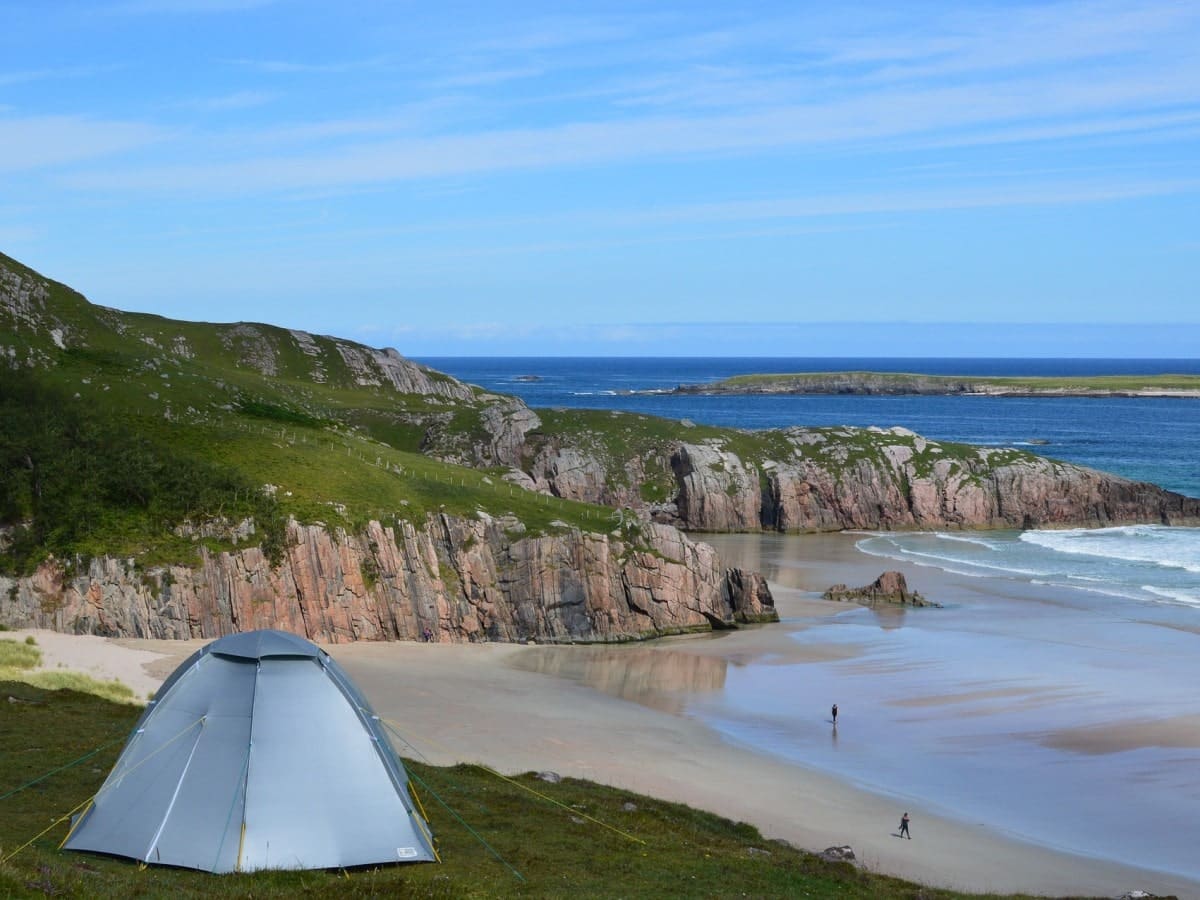
7: As already mentioned, Scotland has lots of bothies, so use them! Although they’re not exactly up to hotel standards, they’re completely free, so check out The Mountain Bothies Association for more information about them. Another great resource is The Scottish Bothy Bible, which you can buy on Amazon .
Where to Stay in Fort William
- Victoria House B&B . Lochy Bridge, Lochyside, Fort William, PH33 7NX. Full Scottish breakfast, free parking, non-smoking rooms, pets allowed, free WiFi, family rooms, tea/coffee maker in all rooms, full Scottish breakfast.
- Alexandra Hotel . The Parade, Fort William, PH33 6AZ. Free parking, non-smoking rooms, restaurant, facilities for disabled guests, free WiFi, family rooms, tea/coffee maker in all rooms, bar, very good breakfast.
- Ardrhu House, Fort William . Ardrhu House Onich, Fort William, PH33 6SD. Free parking, non-smoking rooms, beachfront, restaurant, facilities for disabled guests, free WiFi, tea and coffee makers in all rooms, and a good breakfast.
Where to Stay in Inverness
- Chieftain Hotel , 2, Millburn Road, Inverness, IV2 3PS. Free parking, non-smoking rooms, restaurant, free WiFi, pets allowed, family rooms, bar, and superb breakfast.
- Culliss House B&B . Culliss House, 15 Culduthel Road, Inverness, IV2 4AG. Free parking, non-smoking rooms, free WiFi, tea and coffee makers in all rooms, and an exceptional breakfast.
- Heathmount Hotel . Kingsmills Road, Inverness, IV2 3JU. Free parking, non-smoking rooms, restaurant, pets allowed, family rooms, bar, superb breakfast.
Where to stay in Braemar & Cairngorms
- Braemar Lodge Hotel . Glenshee Road, Braemar, AB35 5YQ. tea/coffee maker in all rooms, bar, breakfast.
- The Gordon Guest House . Station Square, Ballater, AB35 5QB. Non-smoking rooms, free parking, free WiFi, exceptional breakfast.
- Hilton Grand Vacations Club at Craigendarroch . Braemar Road, Ballater, AB35 5XA. Swimming pool, spa and wellness centre, non-smoking rooms, restaurant, facilities for disabled guests, free parking, bar, breakfast.
Where to Stay In Crianlarich
- Best Western The Crianlarich Hotel . Main Street, Crianlarich, FK20 8RW. Free parking, non-smoking rooms, pets allowed, free WiFi, tea/coffee maker in all rooms, bar, very good breakfast.
- Inverardran House Bed and Breakfast . Crianlarich, FK20 8QS. Free parking, free WiFi, tea/coffee maker in all rooms, exceptional breakfast.
- Craigbank Guest House . Main Street, Crianlarich, FK20 8QS. Free parking, free WiFi, tea/coffee maker in all rooms, superb breakfast.
How to Get Around the Highlands
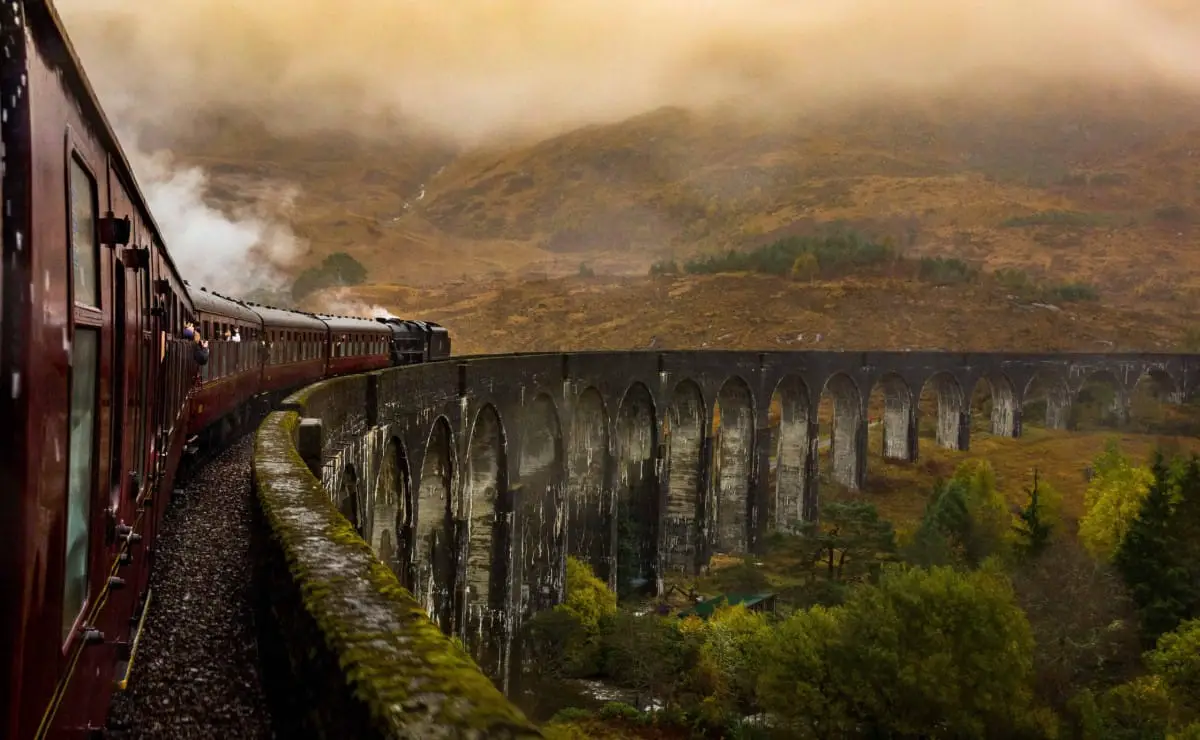
Getting anywhere in the Highlands takes much longer than it does when you’re in the main cities, purely because it’s such an enormous region and everything is spread so far apart. However, there are a few ways to get to the Highlands, so don’t let that deter you.
Flights to the Highlands
If you’re an international visitor you’ll arrive in Scotland at one of our main international airports depending on where you’re coming from – most likely Aberdeen airport (Address: Dyce, Aberdeen, AB21 7DU), Glasgow airport (Address: Paisley, PA3 2SW), or Edinburgh airport (Address: Edinburgh EH12 9DN).
Once at these hubs, you have the option of continuing your journey inland by train or car or booking an internal flight from Aberdeen or Glasgow, with the former serving Orkney and Shetland and the latter connecting to the Western Isles.
The infrastructure between these airport hubs is excellent, and you can take a train from Edinburgh and be at Glasgow in less than an hour, so flying into the capital city and ending up on remote islands like Barra and Tiree is remarkably easy. You’ll find everything you need to know about travelling to Scotland by air in this article: The Complete Guide to Scotland’s Airports .
Using Trains in the Highlands
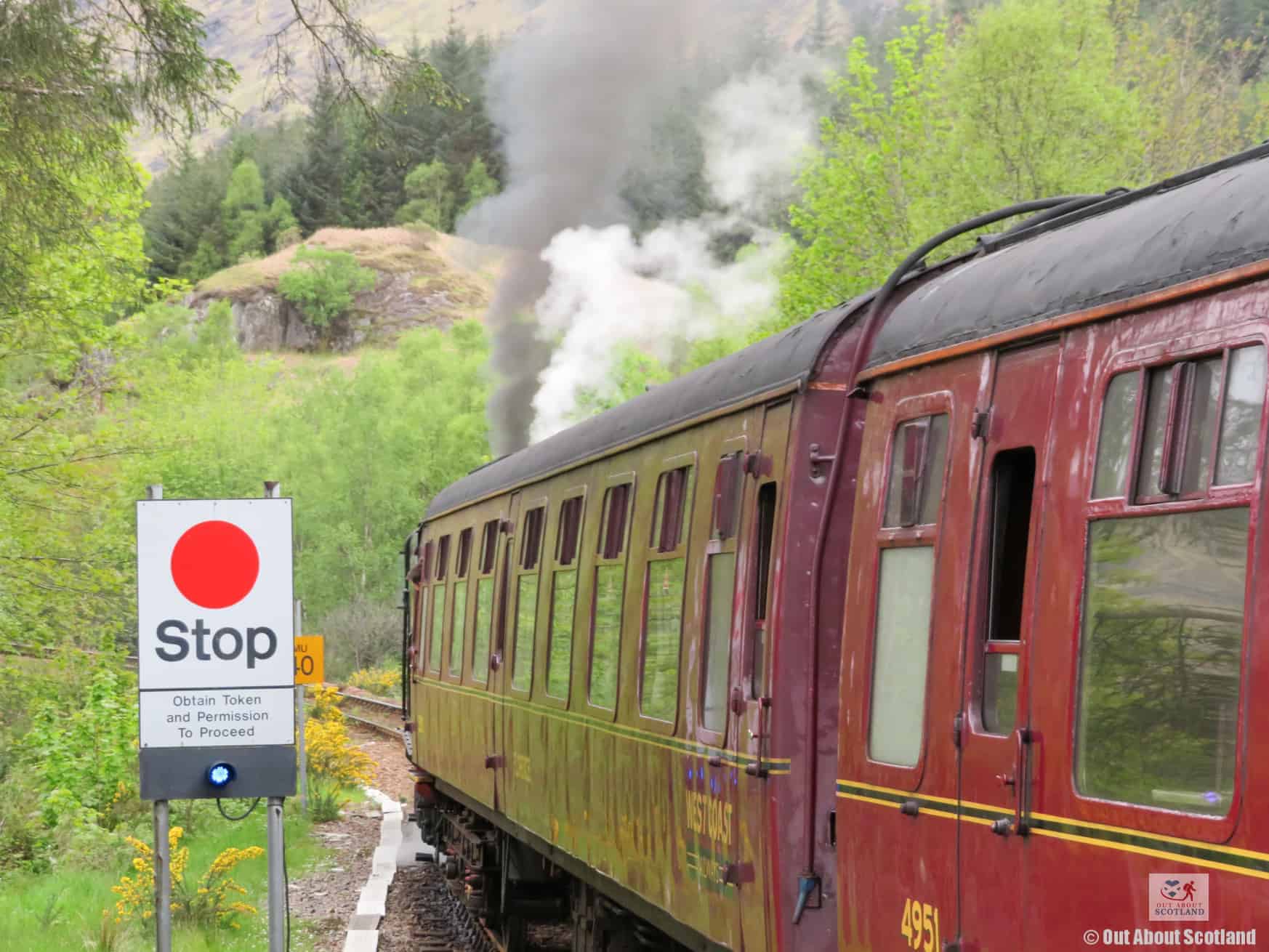
Scotland has a love/hate relationship with its train network, mainly because the services are generally overpriced and subject to frequent delays, but they can be an easy way to get to the Highlands if you do a bit of planning before you set off.
The West Highland Line is particularly recommended because it’s extraordinarily pretty along much of its route,whether you’re travelling from Glasgow to Oban where you can then catch a Calmac ferry to the Hebrides Islands, or Glasgow to Fort William, where you can step on board the Jacobite steam train that runs to the northwest fishing town of Mallaig.
If you’re intending to use the train you really should experience this route to Mallaig as it’s absolutely beautiful and has, in fact, been described as one of the greatest train journeys in the world. You’ll find out more about it in this article: A Guide to the Jacobite Steam Train .
While these routes are very scenic, they can also be a huge pain in the wallet, so I recommend getting a rail travel pass to save money. The Spirit of Scotland travel pass offers unlimited rail travel throughout Scotland for either 4 or 8 days, and you’ll find stations in most towns in the Highlands.
Alternatively, the Highland Rover travel pass gives you four days of unlimited travel over eight consecutive days, and it also gives you 20% off ferry services to Orkney and Shetland,which can be useful if you’re planning to head to the far north during your holiday. You can also book tickets with The Trainline (my preferred option), which usually saves at least 1/3 compared to purchasing tickets at the station.
Using a Car in the Highlands
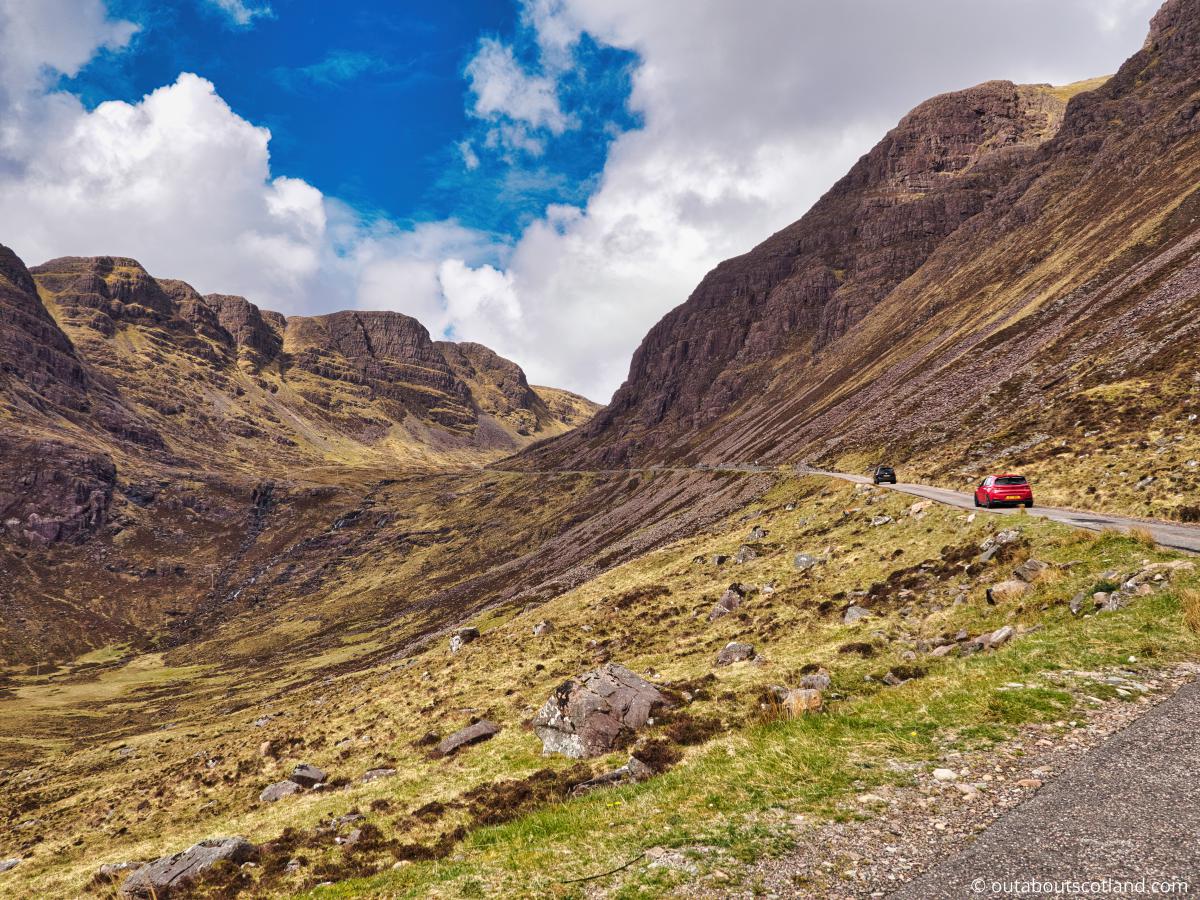
By far the most convenient form of transport in the Highlands is a car, but if you’re travelling here from overseas, it can also be the most expensive. Hire car costs can be extortionate once you add on fuel (we have some of the highest fuel prices in Europe) and insurance (likewise), but there are ways you can keep your costs as low as possible.
Unless you’re travelling in a big group I suggest getting as small a car as is practical, and you’ll find something like a Ford Fiesta or Vauxhall Corsa will whisk families around Scotland’s narrow roads economically, safely, and comfortably.
My top tips for getting a hire car in Scotland are to think seriously before splashing out on collision waiver damage (it’s often a rip-off), go direct to a rental company like SIXT or Hertz instead of using a rental car broker, and don’t get conned into taking out a load of vaguely worded insurance you probably won’t need.
Once you’re out on the open road, you’ll find the scenery gob-smacking, and being able to pull over onto the roadside whenever you like is definitely a bonus, but there are some downsides to driving in Scotland.
First and foremost, I strongly advise you not to drive in the Highlands in winter if you’re an inexperienced driver, as weather conditions can change at the drop of a hat and a road that started off clear in the morning can be buried under a thick blanket of snow in the afternoon. That, coupled with the fact that many roads are winding and single-track, can make for treacherous driving conditions.
On the other hand, embarking on a road trip through the Scottish Highlands in summer when it’s green and lush is a not-to-be-missed experience, especially if you head to the far north and drive one of the greatest road journeys in the world on the North Coast 500 .
I think it’s safe to say there are more than enough places to visit in the Scottish Highlands that you could easily spend a two-week holiday there and never get bored, and it makes a great alternative to spending a summer break in the busy cities of Edinburgh and Glasgow.
Frequently Asked Questions
Where are the scottish highlands.
Traditional thinking divides Scotland into two halves, the Highlands and the Lowlands, by a geological line that follows the Highland Boundary Fault. This fault line starts close to the area of Helensburgh,approximately 40 miles north of Glasgow,and extends all the way to Stonehaven in the northeast.
What are the most popular attractions in the Scottish Highlands?
Glencoe and Bidean Nam Bian . Ben Nevis in the Nevis Range . Loch Ness and Urquhart Castle . The Cairngorms National Park. Loch Lomond and the Trossachs National Park. Eilean Donan Castle . Glenfinnan Monument . Duncansby Head .
How do I tour the Highlands by train?
The West Highland Line runs from Glasgow to Oban where you can catch a Calmac ferry to the Inner Hebrides or you can take the train from Glasgow to Fort William. You can then step on board the Jacobite steam train which runs to the northwest fishing town of Mallaig.
What towns and villages should I visit in the Highlands?
Applecross sits on a peninsula in Strathcarron and is notable for the Bealach na Ba pass, which is one of the highest roads in the UK, reaching 2,053 feet at its highest point. Braemar is best known as the home of the annual Braemar Gathering and Highland Games, held in September. Glencoe is a popular destination for hikers, and it’s a great starting point for treks into the surrounding Glencoe mountains. Fort William is the starting point for the Jacobite steam train. The town is known as the outdoor capital of the UK. Fort Augustus is located on the southernmost tip of Loch Ness and is the main hub for exploring the loch after Inverness, which is located to the north.
Related Posts
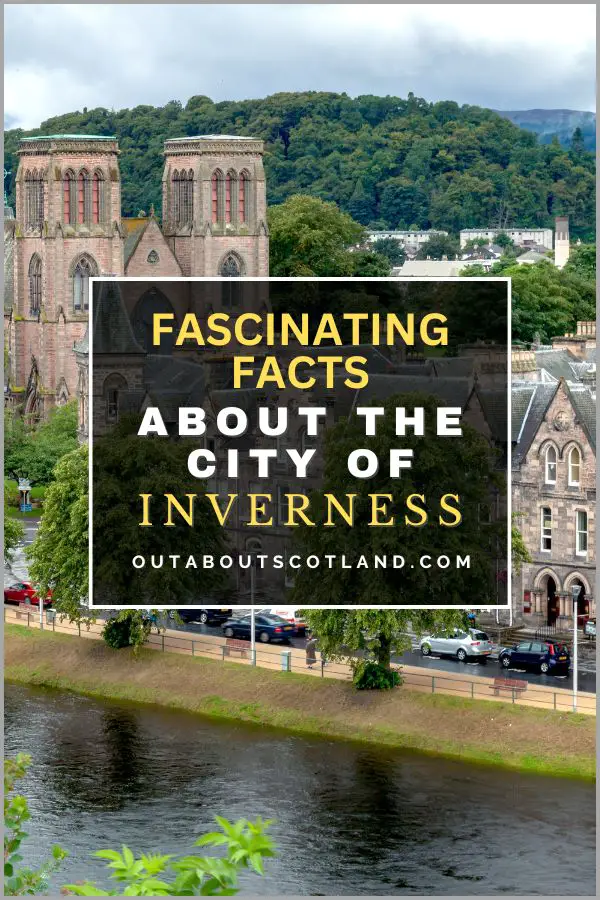
Fascinating Facts About Inverness
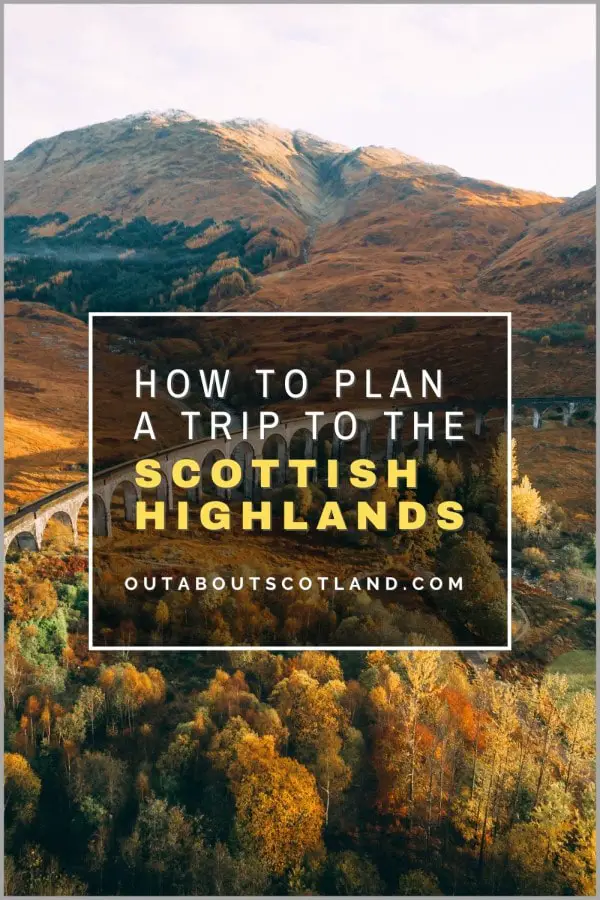
Ullapool Visitor Guide
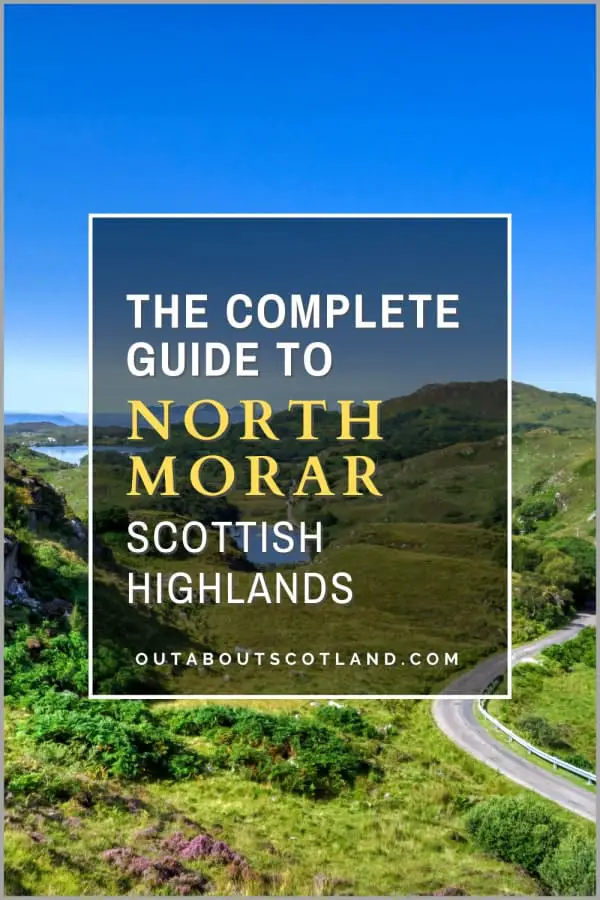
North Morar Visitor Guide
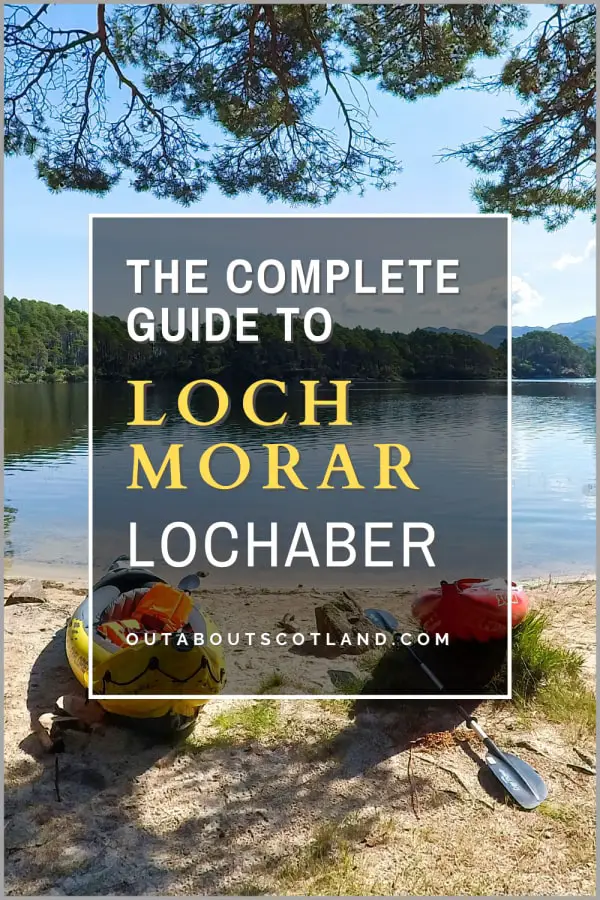
Loch Morar Visitor Guide
Craig Neil is the author, photographer, admin, and pretty much everything else behind Out About Scotland. He lives near Edinburgh and spends his free time exploring Scotland and writing about his experiences. Follow him on Pinterest , Facebook , and YouTube .
Bluebells in springtime on Inchcailloch island
Welcome to Scotland
Scotland is a place of epic natural landscapes, engaging cities and rich cultural heritage. Start your adventure and discover our hidden gems to create memories with friends and family. But don't just take our word for it. National Geographic has just included Scotland in their Best of the World 2024 list, and Far North Scotland has been named as one of Lonely Planet’s Best in Travel destinations for 2024!
Whatever you need right now, let's make it a reality. We can’t wait to share Scotland with you.
Inspiration for your trip
Sorry, something's gone wrong. We can't display this content at the moment.
JavaScript needs to be enabled to watch this video. You can turn this on in your browser settings.
Things To See & Do in Scotland
Discover a wealth of things to see & do in Scotland.
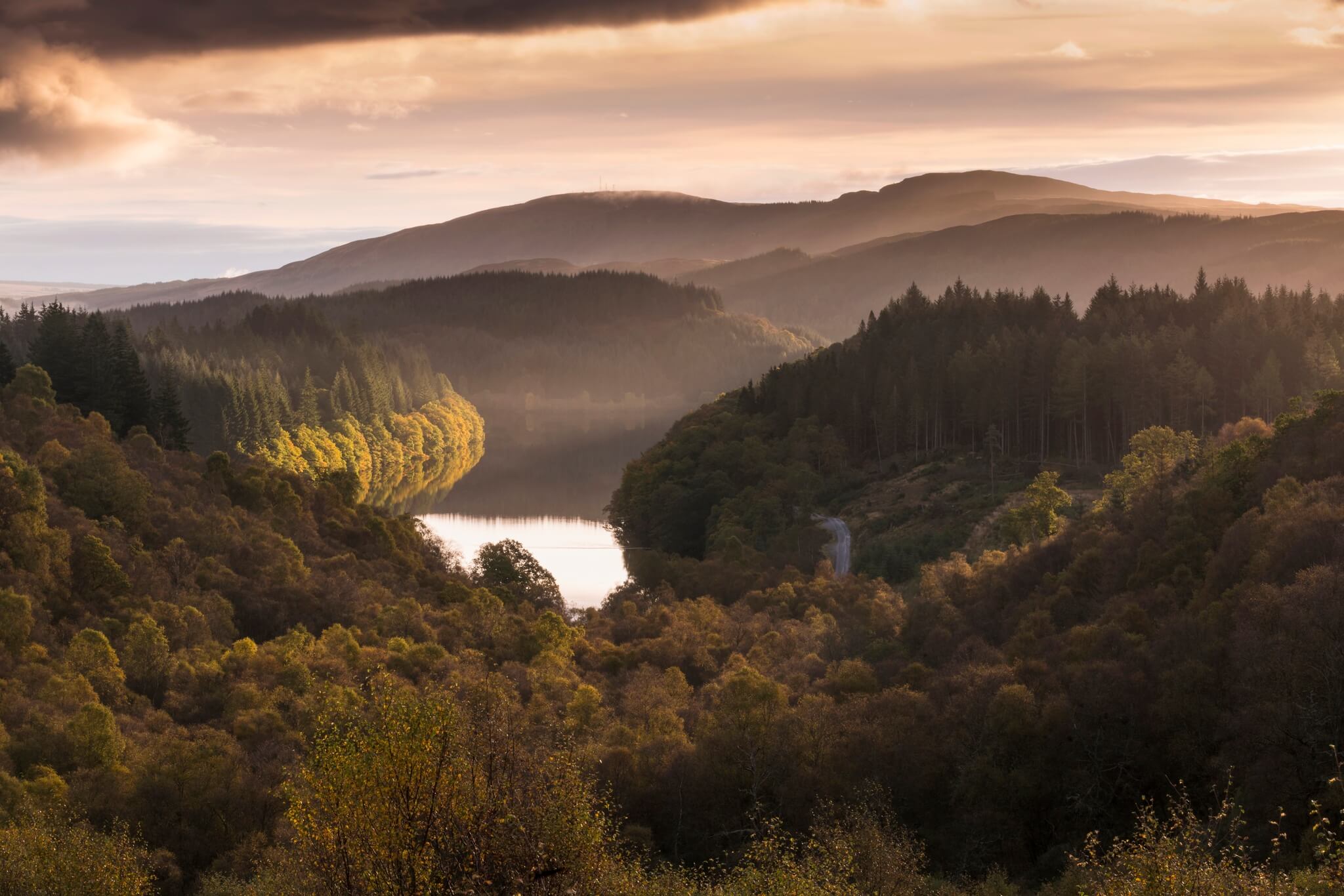
Scotland's Landscapes, Scenery & Nature Spots
Explore our ancient pine forests, arctic landscapes, coastal meadows and more.
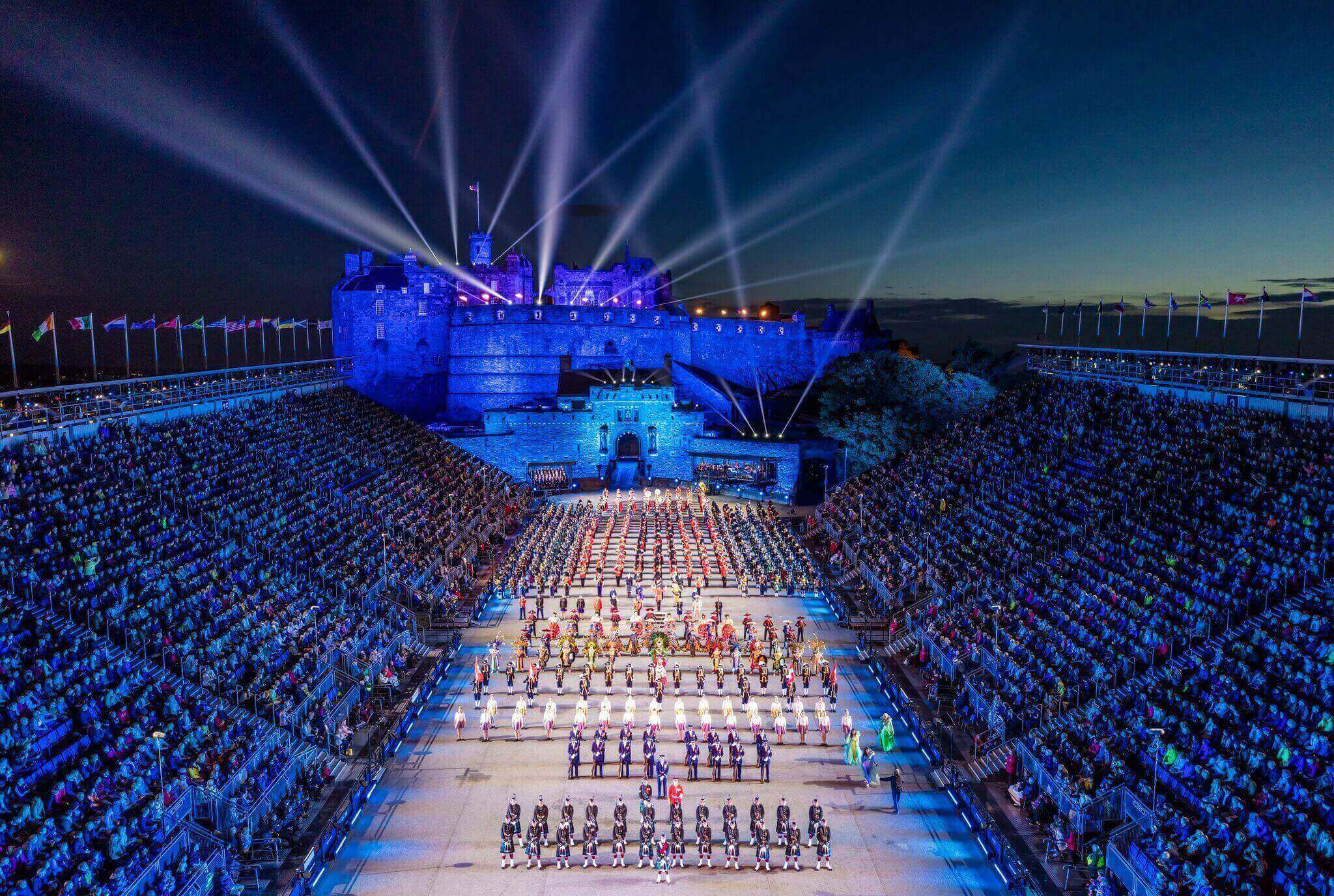
Events & Festivals in Scotland
There's something happening in Scotland right now that the whole family will love.
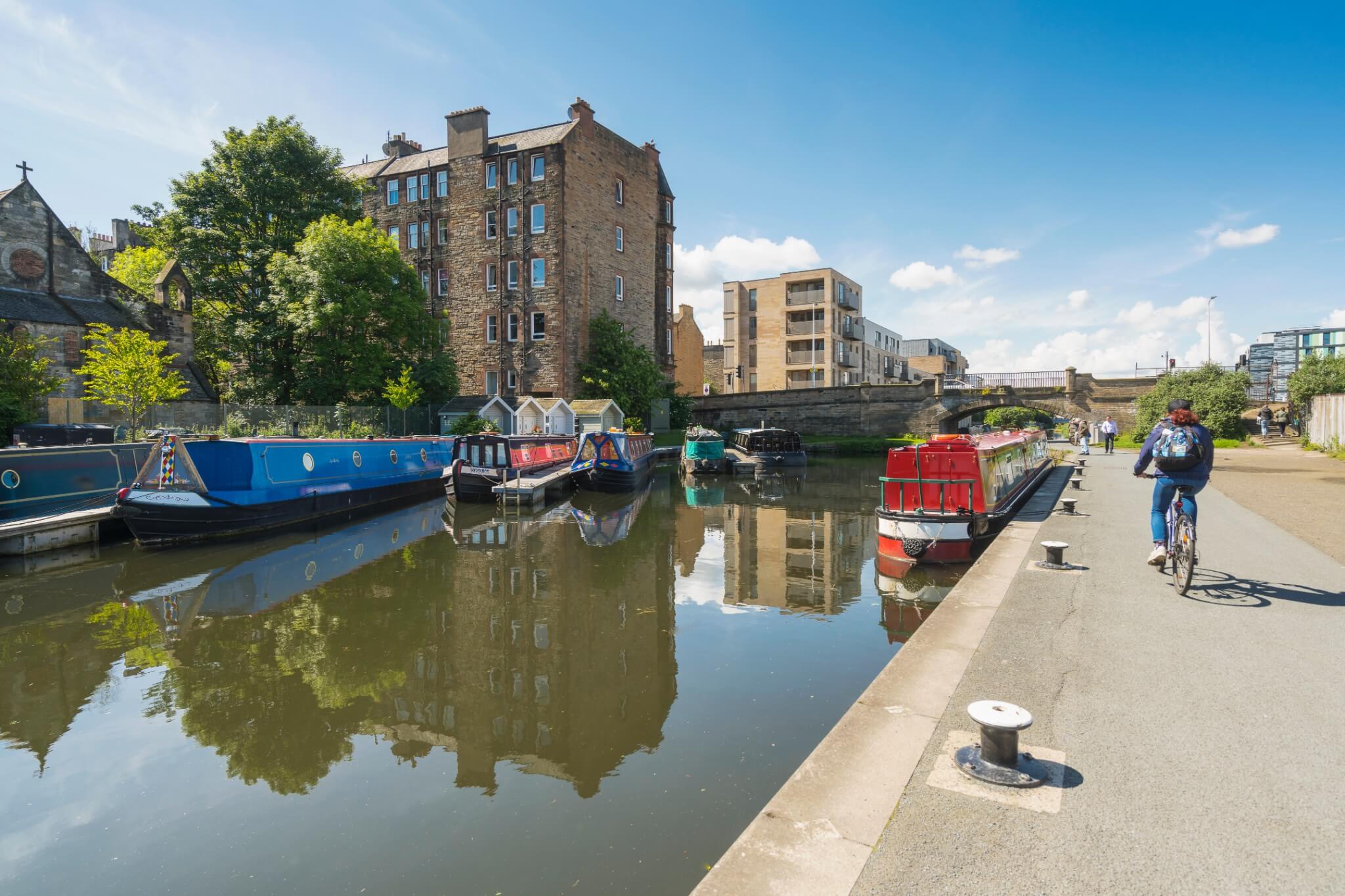
Unusual Accommodation in Scotland
Fancy staying somewhere a little different? From castles to lighthouses, teepees to brochs, there's lots of unusual choices.
Scottish Culture & Uniquely Scottish Things
Discover the culture and stories that make Scotland special.

Scottish Food & Drink
Get a taste for Scotland and discover the country's mouth-watering food and drink.
Pick of the month
Stargazing at the Bruce's Stone in Dumfries and Galloway
© Visit South West Scotland / Ben Bush
Choose Scotland for your cosmic-break
Whether it's catching a glimpse of an eclipse, seeing the northern lights or marvelling at the night sky, Scotland is a magical location for a cosmic getaway.
Uncover Scotland's regions
Map of Scotland
Where will you explore?
From the rugged coastline to sparkling city lights, the ancient Caledonian forests of the Highlands to the rich history of the Lowlands, there are plenty of places to start your Scottish adventure.
Browse our travel blog
Not sure where to start? Check out our list of what's new to spark your imagination.
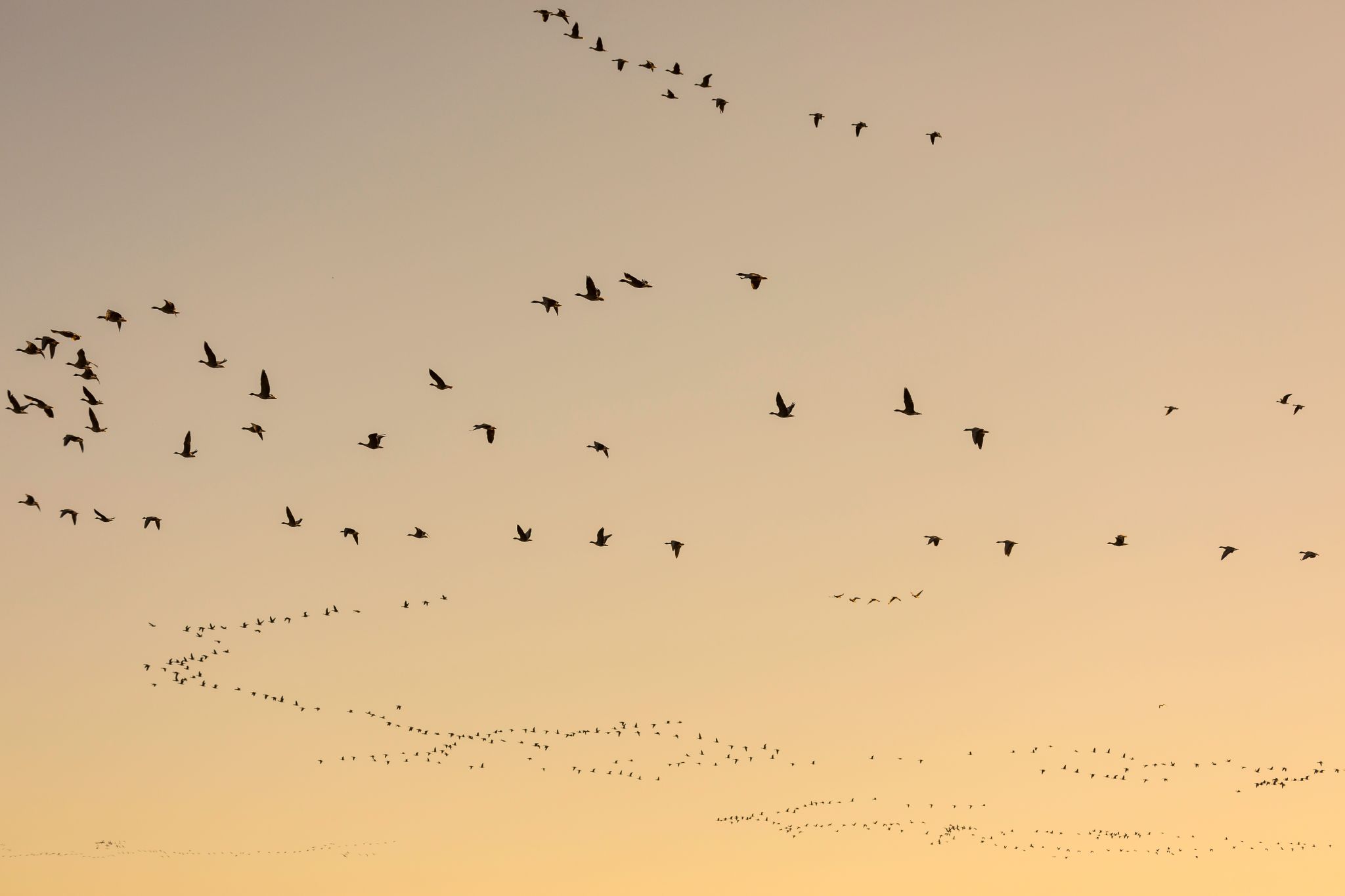
A Beginner's Guide to Scottish Wildlife
Read expert answers to Scottish wildlife questions. Find out what wildlife to see in Scotland and how to do so responsibly.
11 Reasons Why You Should Visit Scotland In 2024
Discover reasons why you should visit Scotland in 2024. Including Arbroath Abbey, Caithness and Sutherland, Perth Museum and more!
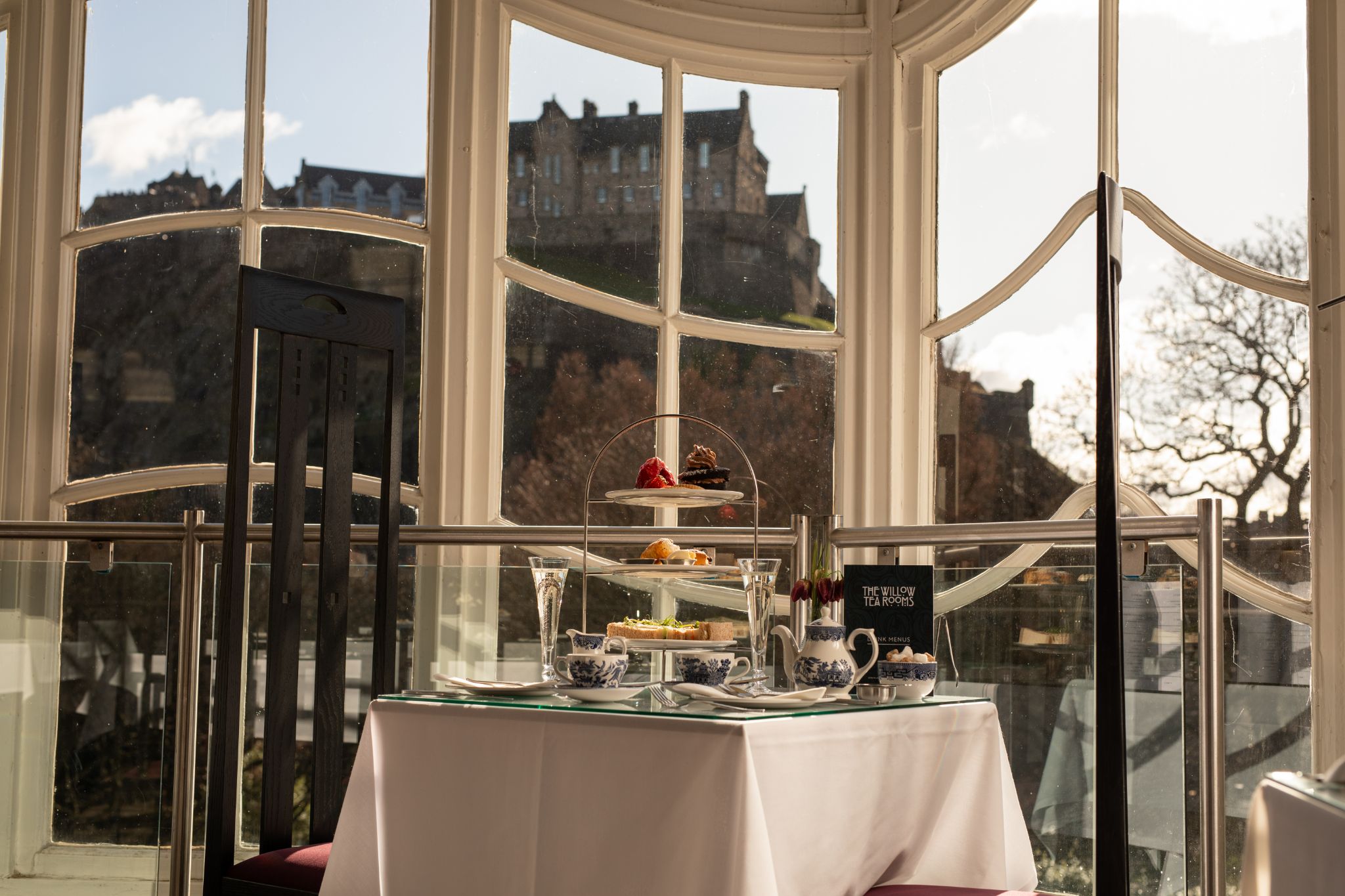
9 Places To Enjoy An Afternoon Tea In Scotland
Discover places to enjoy a delicious afternoon tea in Scotland. Including Maryculter House, Garvock House Hotel, The Willow Tearooms and more!
10 Stunning Pub Walks In Scotland
Discover these stunning pub walks in Scotland. Including Lerwick Explorer to Douglas Arms, Gullane to Bonnie Badger and more!
7 Films & TV Shows Set in Scotland For Your Watch List
Discover great films and tv shows set in Scotland you should add to your watch list. Including One Day, Buccaneers, Traitors, Vigil and more!
10 tricky Scottish place names and how to pronounce them
With this list you’ll get the hang of these 10 tricky Scottish place names in next to no time!
Start planning your seasonal break
Whatever time of year you're coming, Scotland's got you covered. Immerse yourself in each unique season.

Summer Holidays & Breaks in Scotland
Find ideas and inspiration, from family days out to top camping spots, walks and outdoor activities.
Autumn Breaks
Christmas & Winter Breaks
Spring Holidays & Breaks in Scotland
Top tips for travelling to scotland.
Driving an Electric Vehicle in Scotland
Everything you need to know about driving, or hiring, an electric vehicle in Scotland.
Scotland's Weather, Climate & Average Temperature
What's the weather in Scotland? Find out about weather across Scotland's different regions.
Passports, visas & customs
Coming from overseas? Check the passport and visa requirements for visiting Scotland.
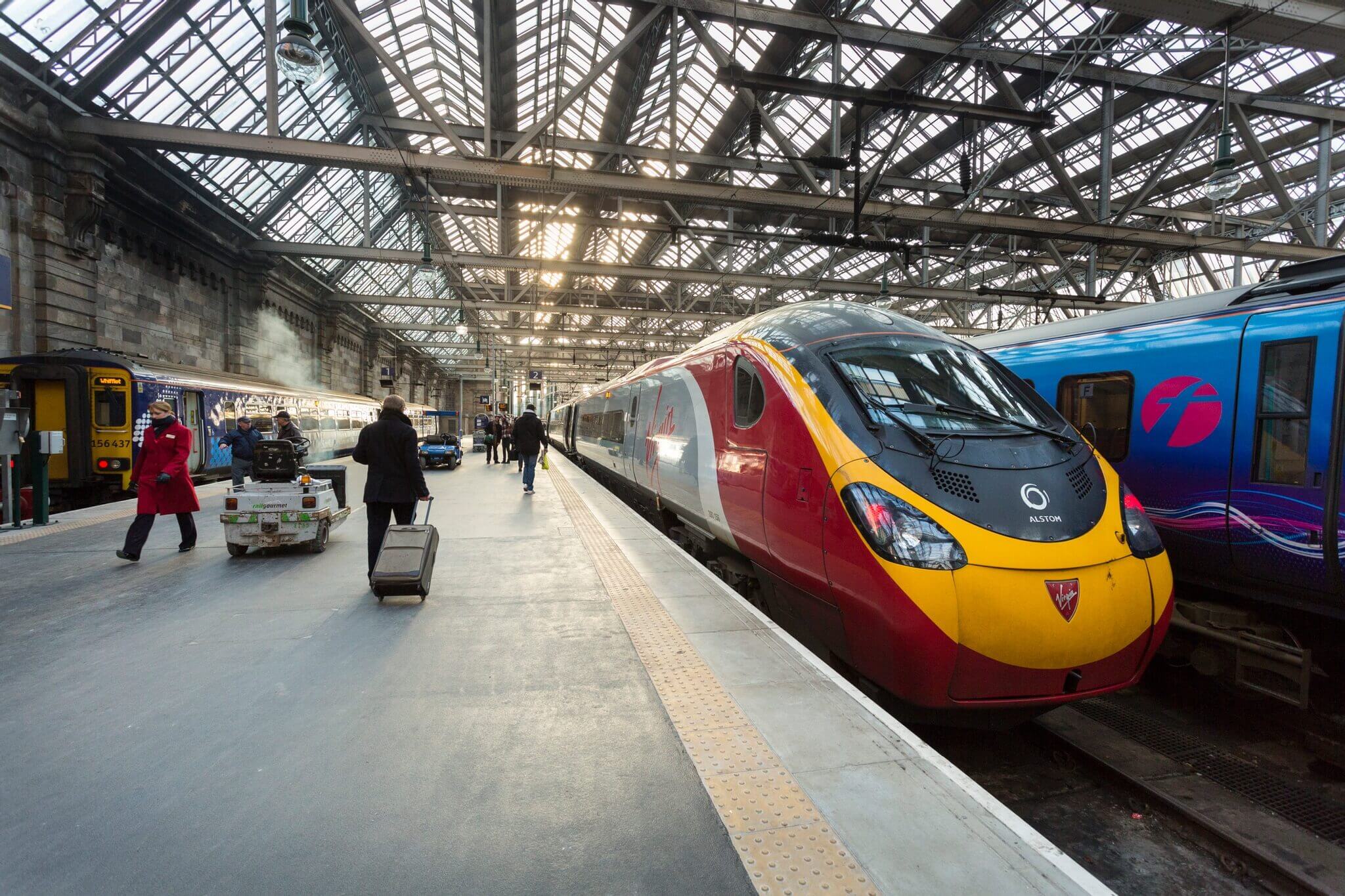
Travelling to Scotland
Plan your journey to Scotland by train, bus, car, plane or ferry.
Accommodation in Scotland
Find the perfect accommodation for your break to Scotland.
Holiday Carbon Calculator
Discover the impact your holiday in Scotland will have on the environment using our carbon calculator.
Your pictures of Scotland
Cookies are needed to see social media images from this place.
JavaScript needs to be enabled to see social media images for this place. You can turn this on in your browser settings.
Find experiences
JavaScript needs to be enabled to see this product search form. You can turn this on in your browser settings.
Join our Newsletter Clan
Get Scotland inspiration direct to your inbox. Don't miss the inside track from our Scotland experts on exciting trip ideas, unique attractions and hidden gems loved by locals.
The Highland region Travel Guide
Book your individual trip , stress-free with local travel experts
- roughguides.com
- highland-region
- Travel guide
- Itineraries
- Local Experts
- Travel Advice
- Accommodation
Plan your tailor-made trip with a local expert
Book securely with money-back guarantee
Travel stress-free with local assistance and 24/7 support
The Highlands of Scotland region covers the northern two-thirds of the country and holds much of the mainland’s most spectacular scenery. The signature combination of mountains, glens, lochs and rivers, surrounded on three sides by a magnificently pitted and rugged coastline, guarantees wonderful moody views.
East Coast of the Highlands of Scotland
North coast of the highlands of scotland, the west coast of the highlands of scotland, the west highland railway.
You may be surprised at how remote much of the Scotland Highlands still is. The vast peat bogs in the north are among the most extensive and unspoilt wilderness areas in Europe, while a handful of the isolated crofting villages on the west coast can still be reached only by boat.
The only major city, Inverness , is best used as a springboard for your Scotland highlands tour to the more remote areas. South of Inverness, the Strathspey region, with a string of villages lying along the River Spey, is dominated by the dramatic Cairngorm mountains , an area brimming with attractive scenery and opportunities for outdoor activity.
The Monadhliath mountains lie between Strathspey and Loch Ness , the largest and most famous of the necklace of lochs which make up the Great Glen . This ancient geological fault line cuts southwest across the Highlands region from Inverness to the town of Fort William.
From Fort William, located beneath Scotland’s highest peak , Ben Nevis, it’s possible to branch out to some fine scenery. The beautiful expanses of Glen Coe are conveniently accessible from here, as well as the appealing west coast, notably the remote and tranquil Ardnamurchan peninsula, the “Road to the Isles” to Mallaig, and the lochs and glens that lead to Kyle of Lochalsh on the most direct route to Skye.
Between Kyle of Lochalsh and Ullapool , the main settlement in the northwest, lies Wester Ross, home to quintessentially west-coast scenes of sparkling sea lochs, rocky headlands and sandy beaches set against some of Scotland’s most dramatic mountains, with Skye and the Western Isles on the horizon.
The little-visited north coast stretching from wind-lashed Cape Wrath at the very northwest tip of the mainland to John O’Groats in the east is even more rugged. Its sheer cliffs and sand-filled bays bearing the brunt of frequently fierce Atlantic storms. The main settlement on this coast is Thurso, jumping-off point for the main ferry service to Orkney.
On the fertile east coast, stretching north from Inverness to the old herring port of Wick, green fields and woodland run down to the sweeping sandy beaches of the Black Isle and the Cromarty and Dornoch firths. This region is rich with historical sites, including the Sutherland Monument by Golspie, Dornoch’s fourteenth-century sandstone cathedral, and a number of places linked to the Clearances, a poignantly remembered chapter in the Highland story.
Tailor-made travel itineraries for Scotland, created by local experts

20 days / from 2994 USD
The Great British Road Trip
Get ready to explore Britain on this unique self-drive road trip. Choose the car of your liking before you hit the road: from the Cotswolds and its picturesque villages over the Beatle's favorite hang-out in Liverpool to Scotland's capital Edinburgh: this trip includes many highlights to be explored

6 days / from 613 USD
Festive Feelings around Christmas in Scotland
Experience the magic of Christmas in the heart of the Scottish Highlands! Lovely Christmas Markets and winter festivals await visitors during the winter months, but this itinerary can also be turned into a summer festival hop!

11 days / from 1070 USD
Scotland's Wildest Natural Scenery
Want to lose yourself in Scotland's wildest natural scenery? This itinerary is a breath of fresh air and perfect to explore the most enchanting landscapes of the Highlands. It will allow you to get to know the wildest landscapes of Scotland, its fast-paced history and its amazing traditions.
The east coast of the Highlands, between Inverness and Wick, is nowhere near as spectacular as the west, with gently undulating moors, grassland and low cliffs where you might otherwise expect to find sea lochs and mountains. While many visitors speed up the main A9 road through this region in a headlong rush to the Orkneys’ prehistoric sites, those who choose to dally will find a wealth of brochs, cairns and standing stones, many in remarkable condition.
The area around the Black Isle and the Tain was a Pictish heartland, and has yielded many important finds. Further north, from around the ninth century AD onwards the Norse influence was more keenly felt than in any other part of mainland Britain, and dozens of Scandinavian-sounding names recall the era when this was a Viking kingdom.
The fishing heritage is a recurring theme along this coast, though there are only a handful of working boats scattered around the harbours today; the area remains one of the country’s poorest, reliant on relatively thin pickings from sheep farming, fishing and tourism. The one stretch of the east coast that’s always been relatively rich, however, is the Black Isle just over the Kessock Bridge heading north out of Inverness, whose main village, Cromarty, is the region’s undisputed highlight.
Beyond the golfing resort of Dornoch, the ersatz-Loire chateau Dunrobin Castle is the main tourist attraction, a monument as much to the iniquities of the Clearances as to the eccentricities of Victorian taste. Wick, the largest town in these parts, has an interesting past entwined with the fishing industry, but is otherwise uninspiring.
The Black Isle
Sandwiched between the Cromarty Firth to the north and, to the south, the Moray and Beauly firths which separate it from Inverness, the Black Isle is not an island at all, but a fertile peninsula whose rolling hills, prosperous farms and stands of deciduous woodland make it more reminiscent of Dorset or Sussex than the Highlands. It probably gained its name because of its mild climate: there’s rarely frost, which leaves the fields “black” all winter; another explanation is that the name derives from the Gaelic word for black, dubh – a possible corruption of St Duthus. On the south side of the Black Isle, near Fortrose, Chanonry Point juts into a narrow channel in the Moray Firth and is an excellent place to look for dolphins.
Cromarty on the Black Isle
An ancient legend recalls that the twin headlands flanking the entrance to the Cromarty Firth, known as The Sutors (from the Gaelic word for shoemaker), were once a pair of giant cobblers who used to protect the Black Isle from pirates. Nowadays, however, the only giants in the area are the colossal oil rigs marooned in the estuary off Nigg and Invergordon like metal monsters marching out to sea. They form a surreal counterpoint to the web of tiny streets and charming workers’ cottages of Cromarty. The Black Isle’s main settlement, Cromarty was an ancient ferry-crossing point on the pilgrimage trail to St Duthus’s shrine in Tain, but lost much of its trade during the nineteenth century to places served by the railway; a branch line to the town was begun but never completed. Cromarty became a prominent port in 1772 when an entrepreneurial local landlord, George Ross, founded a hemp mill here, fuelling a period of prosperity during which Cromarty acquired some of Scotland’s finest Georgian houses: these, together with the terraced fishers’ cottages of the nineteenth-century herring boom, have left the town with a wonderfully well-preserved concentration of Scottish domestic architecture.
The museum, housed in the old Courthouse on Church Street, tells the history of the town using audiovisuals and animated figures. Dolphin- and other wildlife-spotting trips are offered locally by EcoVentures, who travel out through the Sutors to the Moray Firth in a powerful RIB.
The Dornoch Firth and around
North of the Cromarty Firth, the hammer-shaped Fearn peninsula can still be approached from the south by the ancient ferry crossing from Cromarty to Nigg, though to the north the link is a causeway over the Dornoch Firth, the inlet that marks the northern boundary of the peninsula. On the southern edge of the Dornoch Firth the A9 bypasses the quiet town of TAIN, an attractive, old-fashioned small town of grand whisky-coloured sandstone buildings that was the birthplace of St Duthus, an eleventh-century missionary who inspired great devotion in the Middle Ages. Tain’s main attraction is the Glenmorangie whisky distillery where the highly rated malt is produced; it lies beside the A9 on the north side of town. Booking is recommended for the tours; there is also a shop.
Dornich, a genteel and appealing town eight miles north of Tain, lies on a flattish headland overlooking the Dornoch Firth. A middle-class holiday resort, with trees and flowers in profusion, solid Edwardian hotels, and miles of sandy beaches giving good views across the estuary to the Fearn peninsula, the town is renowned for its championship golf course, Scotland’s most northerly first-class course. Nearby Skibo Castle was where Madonna married Guy Ritchie; she also had her son baptized in Dornoch cathedral.
Ten miles north of Dornoch on the A9 lies the straggling red sandstone town of Golspie, whose status as an administrative centre does little to relieve its dullness. It is, however, the jumping-off point for some brilliant mountain biking: the fabulous Highland Wildcat Trails are within the forested hills just half a mile to the west. The easy to severe (colour-coded) trails include a huge descent from the summit of Ben Bhraggie to sea level and a ride past the Sutherland monument, erected in memory of the landowner who oversaw the eviction of thousands of his tenants in a process known as the Clearances.
Sutherland Monument
Immediately behind Golspie, you can’t miss the 100ft monument to the first Duke of Sutherland, which peers proprietorially down from the summit of the 1293ft Beinn a’Bhragaidh (Ben Bhraggie). An inscription cut into its base recalls that the statue was erected in 1834 by “a mourning and grateful tenantry [to] a judicious, kind and liberal landlord [who would] open his hands to the distress of the widow, the sick and the traveller”. Unsurprisingly, there’s no reference to the fact that the duke, widely regarded as Scotland’s own Josef Stalin, forcibly evicted 15,000 crofters from his million-acre estate. It’s worth the stiff climb to the top of the hill (round trip 1hr 30min) for the wonderful views south along the coast past Dornoch to the Moray Firth and west towards Lairg and Loch Shin. The path is steep and strenuous in places, however, and there’s no view until you’re out of the trees, about twenty minutes from the top.
Originally a Viking settlement named Vik (meaning “bay”), WICK has been a royal burgh since 1589. It’s actually two towns: Wick proper, and Pultneytown, south across the river, a messy, rather run-down community planned by Thomas Telford in 1806 to encourage evicted crofters to take up fishing. Wick’s heyday was in the mid-nineteenth century, when it was the busiest herring port in Europe, with a fleet of more than 1100 boats exporting tons of fish to Russia, Scandinavia and the West Indian slave plantations. Though redevelopment of the harbour is underway, the town still has a down-at-heel air. The area around the harbour in Pultneytown, lined with rows of fishermen’s cottages, is most worth a wander, with acres of largely derelict net-mending sheds, stores and cooperages around the harbour giving some idea of the former scale of the fishing trade. The town’s story is told in the Wick Heritage Centre in Bank Row, Pultneytown. The only other visitor attraction is the fairly simple Pulteney Distillery on nearby Huddart Street, a few blocks from the sea.
Carbisdale Castle
Towering high above the River Shin, twenty miles northwest of Tain, the daunting neo-Gothic profile of Carbisdale Castle overlooks the Kyle of Sutherland, as well as the battlefield where the gallant Marquess of Montrose was defeated in 1650, finally forcing Charles II to accede to the Scots’ demand for Presbyterianism. The castle was erected between 1906 and 1917 for the dowager Duchess of Sutherland, following a protracted family feud. Designed in three distinct styles (to give the impression that it was added to over a long period of time), Carbisdale was eventually acquired by a Norwegian shipping magnate in 1933, and finally gifted, along with its entire contents and estate, to Hostelling Scotland, which turned it into one of the most opulent hostels in the world. Bring a bike to take advantage of the several miles of mountain-biking trails in the nearby Balblair and Carbisdale woods. The best way to get here by public transport is to take a train from Inverness to nearby Culrain station.
Though a constant stream of sponsored walkers, caravans and tour groups makes it to the dull town of John O’Groats, surprisingly few visitors travel the whole length of the Highlands’ wild north coast. Those that do, however, rarely return disappointed. Pounded by one of the world’s most ferocious seaways, Scotland’s rugged northern shore is backed by barren mountains in the west, and in the east by lochs and open rolling grasslands. Between its far ends, miles of crumbling cliffs and sheer rocky headlands shelter bays whose perfect white beaches are nearly always deserted, even in the height of summer – though, somewhat incongruously, they’re also home to Scotland’s best surfing waves.
Durness is a good jumping-off point for nearby Balnakiel beach, one of the area’s most beautiful sandy strands, and for rugged Cape Wrath, the windswept promontory at Scotland’s northwest tip. Thurso, the largest town on the north coast, is really only visited by those en route to Orkney. More enticing are the huge seabird colonies clustered in clefts and on remote stacks at Dunnet Head and Duncansby Head, to the east of Thurso.
John O’Groats and around
Romantics expecting to find a magical meeting of land and water at JOHN O’GROATS are invariably disenchanted – sadly it remains an uninspiring tourist trap. The views north to Orkney are fine enough, but the village offers little more than a string of souvenir shops and cafés thronged with coach parties. A number of boat trips set off from here, with some operators offering whitewater rafting and others heading out to Duncansby head and local seal colonies. The village gets its name from the Dutchman Jan de Groot, who obtained the ferry contract for the hazardous crossing to Orkney in 1496. The eight-sided house he built for his eight quarrelling sons (so that each one could enter by his own door) is echoed in the octagonal tower of the much-photographed but now vacant John O’Groats Hotel.
Durness and around
Scattered around a string of sheltered sandy coves and grassy cliff-tops, Durness is the most northwesterly village on the British mainland. It straddles the turning point on the main A838 road as it swings east from the inland peat bogs of the interior to the north coast’s fertile strip of limestone machair. Durness village sits above its own sandy bay, Sango Sands, while half a mile to the east is SMOO, formerly a RAF station. In between Durness and Smoo is the village hall, whose windblown and rather forlorn community garden harbours a memorial commemorating the Beatle John Lennon, who used to come to Durness on family holidays as a child (and revisited the place in the 1960s with Yoko). It’s worth pausing at Smoo to see the 200ft-long Smoo Cave, a gaping hole in a sheer limestone cliff formed partly by the action of the sea and partly by the small burn that flows through it.
An excellent day-trip begins two miles southwest of Durness at KEOLDALE, where (tides and MOD permitting) a foot-passenger ferry crosses the spectacular Kyle of Durness estuary to link with a minibus that runs the eleven miles out to Cape Wrath, mainland Britain’s most northwesterly point. Note that Garvie Island (An Garbh-eilean) is an air bombing range, and the military regularly close the road to Cape Wrath. The headland takes its name not from the stormy seas that crash against it for most of the year, but from the Norse word hvarf, meaning “turning place” – a throwback to the days when Viking warships used it as a navigation point during raids on the Scottish coast.
Approached from the isolation of the west, THURSO feels like a metropolis. In reality, it’s a relatively small service centre visited mostly by people passing through to the adjoining port of Scrabster to catch the ferry to Orkney, or by increasing numbers of surfers attracted to the waves on the north coast. There’s little to see, but the grid-plan streets have some rather handsome Victorian architecture in the local, greyish sandstone. If you’re coming to surf, want a lesson, need to hire a board or simply fancy a coffee and home-made cake before hitting the waves, head for Tempest Surf on Riverside Road by Thurso harbour.
The Highlands’ starkly beautiful west coast – stretching from the Morvern peninsula (opposite Mull) in the south to wind-lashed Cape Wrath in the far north – is arguably the finest part of Scotland. Serrated by fjord-like sea lochs, the long coastline is scattered with windswept white-sand beaches, cliff-girt headlands, and rugged mountains sweeping up from the shoreline. When the sun shines, the sparkle of the sea, the richness of colour and the clarity of the views out to the scattered Hebrides are simply irresistible. This is the least populated part of Britain, with just two small towns, and yawning tracts of moorland and desolate peat bog between crofting settlements.
Lying within easy reach of Inverness, the popular stretch of the coast between Kyle of Lochalsh and Ullapool features the region’s more obvious highlights: the awesome mountainscape of Torridon, Gairloch’s sandy beaches, the famous botanic gardens at Inverewe, and Ullapool itself, a picturesque and bustling fishing town from where ferries leave for the Outer Hebrides. However, press on further north, or south, and you’ll get a truer sense of the isolation that makes the west coast so special. Traversed by few roads, the remote northwest corner of Scotland is wild and bleak, receiving the full force of the North Atlantic’s frequently ferocious weather . The scattered settlements of the far southwest, meanwhile, tend to be more sheltered, but they are separated by some of the most extensive wilderness areas in Britain – lonely peninsulas with evocative Gaelic names like Ardnamurchan, Knoydart and Glenelg.
Kyle of Lochalsh and around
As the main gateway to Skye, KYLE OF LOCHALSH used to be an important transit point for tourists, locals and services. However, with the building of the Skye Bridge in 1995, Kyle was left as merely the terminus for the train route from Inverness, with little else to offer. Of more interest is nearby Eilean Donan Castle, perched at the end of a stone causeway on the shores of Loch Duich. A few miles north of Kyle of Lochalsh is the delightful village of Plockton, a refreshing alternative to its utilitarian neighbour, with cottages grouped around a yacht-filled bay and Highland cattle wandering the streets.
The “Rough Bounds”
The remote and sparsely populated southwest corner of the Highlands, from the empty district of Morvern to the isolated peninsula of Knoydart, is a dramatic, lonely region of mountain and moorland fringed by a rocky, indented coast whose stunning white beaches enjoy wonderful views to Mull, Skye and other islands. Its Gaelic name, Garbh-chiochan, translates as the “Rough Bounds”, implying a region geographically and spiritually apart. Even if you have a car, you should spend some time here exploring on foot; there are so few roads that some determined hiking is almost inevitable.
The Ardnamurchan peninsula
A nine-mile drive south of Fort William down Loch Linnhe, the five-minute ferry crossing at Corran Ferry provides the most direct point of entry for Morvern and the rugged Ardnamurchan peninsula. The most westerly point on the British mainland, the peninsula lost most of its inhabitants during the infamous Clearances and is now sparsely populated with only a handful of tiny crofting settlements clinging to its jagged coastline. It boasts some beautiful, pristine, empty beaches – especially about three miles north of the Ardnamurchan lighthouse at Sanna Bay, a shell-strewn strand and series of dunes that offers truly unforgettable vistas of the Small Isles to the north, circled by gulls, terns and guillemots. The coastal hamlet of SALEN marks the turn-off for Ardnamurchan Point: from here it’s a further 25 miles of slow, scenic driving along the singletrack road which follows the northern shore of Loch Sunart.
The Road to the Isles
The “Road to the Isles” from Fort William to Mallaig, followed by the West Highland Railway and the narrow, winding A830, traverses the mountains and glens of the Rough Bounds before breaking out onto a spectacularly scenic coast of sheltered inlets, white beaches and wonderful views to the islands of Rùm, Eigg, Muck and Skye. This is country associated with Bonnie Prince Charlie, whose adventures of 1745–46 began and ended on this stretch of coast, with his first, defiant gathering of the clans at Glenfinnan, nineteen miles west of Fort William at the head of lovely Loch Shiel. The spot is marked by a column (now a little lopsided), crowned with a clansman in full battle dress, erected in 1815.
A cluttered, noisy port whose pebble-dashed houses struggle for space with great lumps of exposed granite strewn over the hillsides sloping down to the sea, MALLAIG, 47 miles west of Fort William, isn’t pretty. As the main ferry stop for Skye, the Small Isles and Knoydart, it’s always full of visitors, though the continuing source of the village’s wealth is its fishing industry. When the fleet is in, trawlers encircled by flocks of raucous gulls choke the harbour, and the pubs, among the liveliest on the west coast, host bouts of serious drinking.
Wester Ross
The western seaboard of the old county of Ross-shire, Wester Ross, blends all the classic elements of Scotland’s coastal scenery – dramatic mountains, sandy beaches, whitewashed crofting cottages and shimmering island views – in spectacular fashion. Though popular with generations of adventurous Scottish holiday-makers, only one or two places feel blighted by tourist numbers, with places such as Applecross and the peninsulas north and south of Gairloch maintaining an endearing simplicity and sense of isolation. There’s some tough but wonderful hiking to be enjoyed in the mountains around Torridon and Coigach, while boat trips out among the islands and the prolific sea- and birdlife of the coast are another draw. The main settlement is the attractive fishing town of Ullapool, port for ferry services to Stornoway in the Western Isles, but a pleasant enough place to use as a base, not least for its active social and cultural scene.
Walks around Torridon
There can be difficult conditions on virtually all hiking routes around Torridon, and the weather can change rapidly. If you’re relatively inexperienced but want to do the magnificent ridge walk along the Liathach (pronounced “lee-ach”) massif, or the strenuous traverse of Beinn Eighe (pronounced “ben ay”), join a National Trust Ranger Service guided hike.
For those confident to go it alone, one of many possible routes takes you behind Liathach and down the pass, Coire Dubh, to the main road in Glen Torridon. This is a great, straightforward, full-day walk, covering thirteen miles and taking in superb landscapes. Another rewarding walk, even in rough weather, is the seven-mile hike up the coast from Lower Diabaig, ten miles northwest of Torridon village, to Redpoint. On a clear day, the views across to Raasay and Applecross from this gentle path are superlative, but you’ll have to return along the same trail, or else make your way back via Loch Maree on the A832.
Scotland’s most famous railway line is the brilliantly engineered West Highland Railway, running from Glasgow to Mallaig via Fort William. The line is in two sections: the southern part travels from Glasgow Queen Street station along the Clyde estuary and up Loch Long before switching to the banks of Loch Lomond on its way to Crianlarich, where the train divides with one section heading for Oban. After climbing around Beinn Odhar on a unique horseshoe-shaped loop of viaducts, the line traverses desolate Rannoch Moor, where the track had to be laid on a mattress of tree roots, brushwood and thousands of tons of earth and ashes. The train then swings into Glen Roy, passing through the dramatic Monessie Gorge and entering Fort William from the northeast.

The Harry Potter Steam Train on the Glenfinnan viaduct - shutterstock
The second leg of the journey, from Fort William to Mallaig, is arguably even more spectacular, and from June to mid-October one of the scheduled services is pulled by the Jacobite Steam Train. Shortly after leaving Fort William the railway crosses the Caledonian Canal beside Neptune’s Staircase by way of a swing bridge at Benavie, before travelling along the shores of Locheil and crossing the magnificent 21-arch viaduct at Glenfinnan, where the steam train, in its “Hogwarts Express” livery, was filmed for the Harry Potter movies. At Glenfinnan station there’s a small museum dedicated to the history of the West Highland line, as well as two old railway carriages that have been converted into a restaurant and a bunkhouse . Not long afterwards the line reaches the coast, where there are unforgettable views of the Small Isles and Skye as it runs past the famous silver sands of Morar and up to Mallaig, where there are connections to the ferry that crosses to Armadale on Skye.
If you’re planning on travelling the West Highland line, and in particular linking it to other train journeys (such as the similarly attractive route between Inverness and Kyle of Lochalsh), it’s worth considering one of ScotRail’s multiday Highland Rover tickets.
Related articles from the blog

Discover more places in Scotland

- Inverness and around
The Rough Guides to Scotland and related travel guides
In-depth, easy-to-use travel guides filled with expert advice.

Find even more inspiration here
Planning your own trip prepare for your trip.
Use Rough Guides' trusted partners for great rates
written by Rough Guides Editors
updated 22.04.2024
Ready to travel and discover Scotland?
Get support from our local experts for stress-free planning & worry-free travels.
- Where to stay
- Travel advice
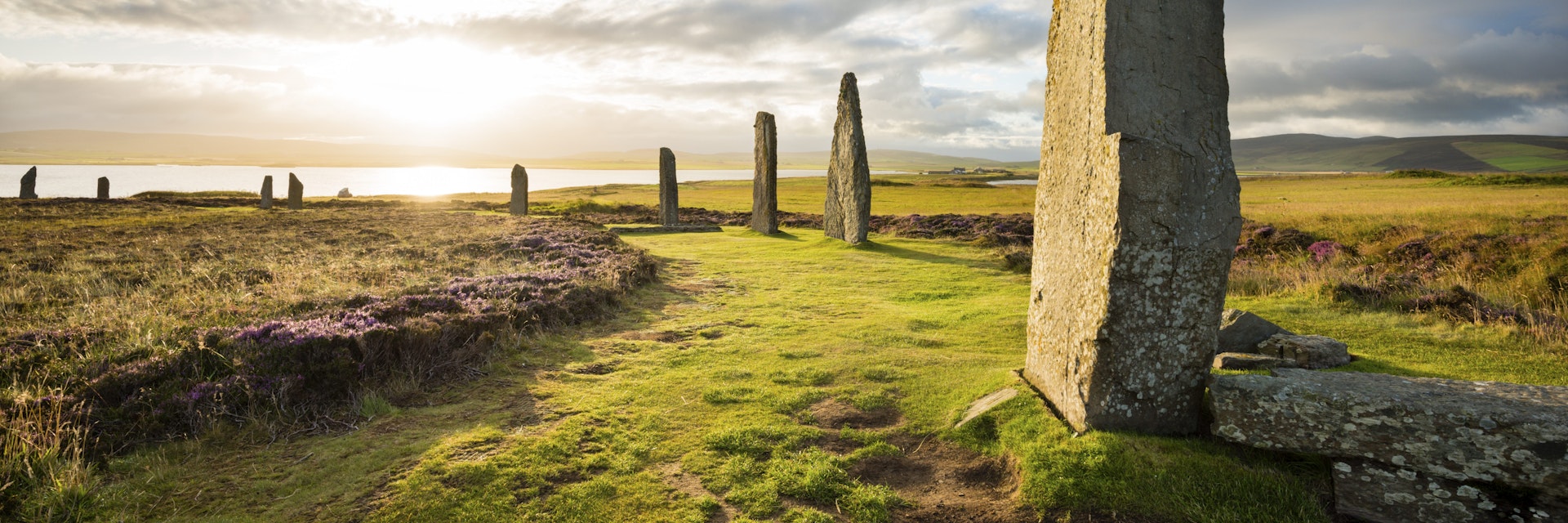
Justin Foulkes
The Highlands & Islands
The wild landscapes of Scotland's Highlands and islands offer the ultimate escape – one of the last corners of Europe where you can discover genuine solitude.
Leave the planning to a local expert
Experience the real The Highlands & Islands. Let a local expert handle the planning for you.
Attractions
Must-see attractions.
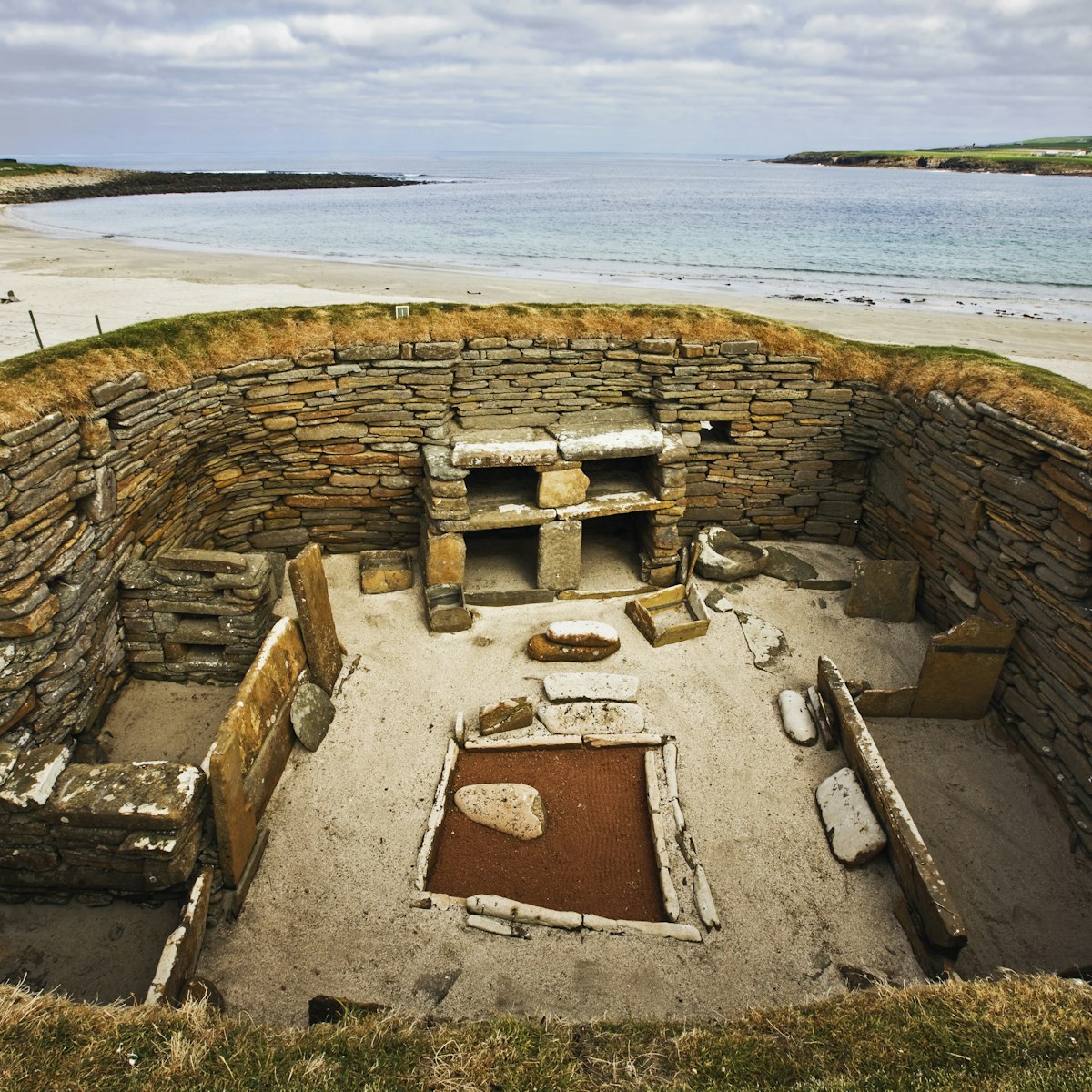
Predating Stonehenge and the pyramids of Giza, extraordinary Skara Brae is one of the world's most evocative prehistoric sites, and northern Europe’s best…
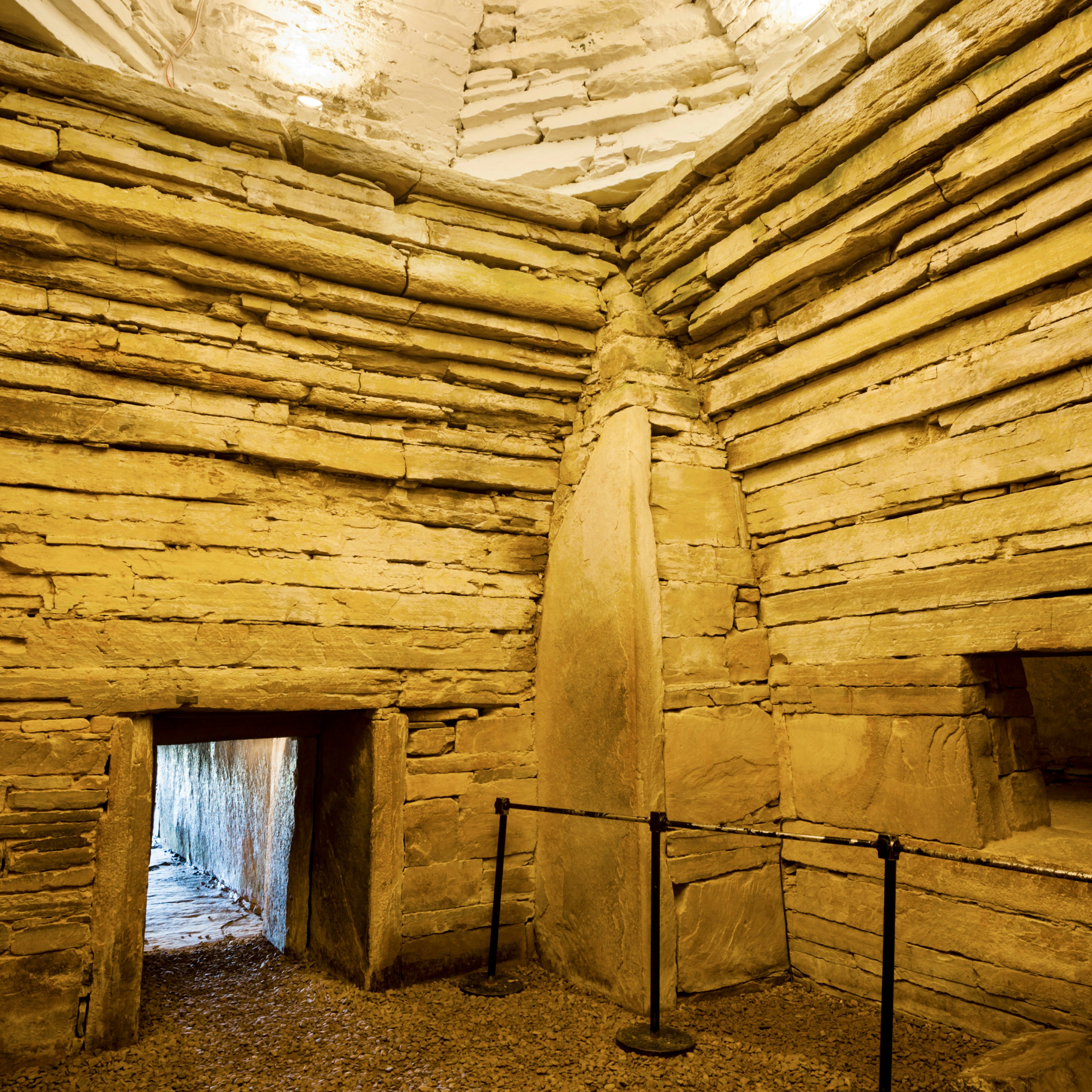
Constructed about 5000 years ago, Maeshowe is an extraordinary place, a Stone Age tomb built from enormous sandstone blocks, some of which weighed many…
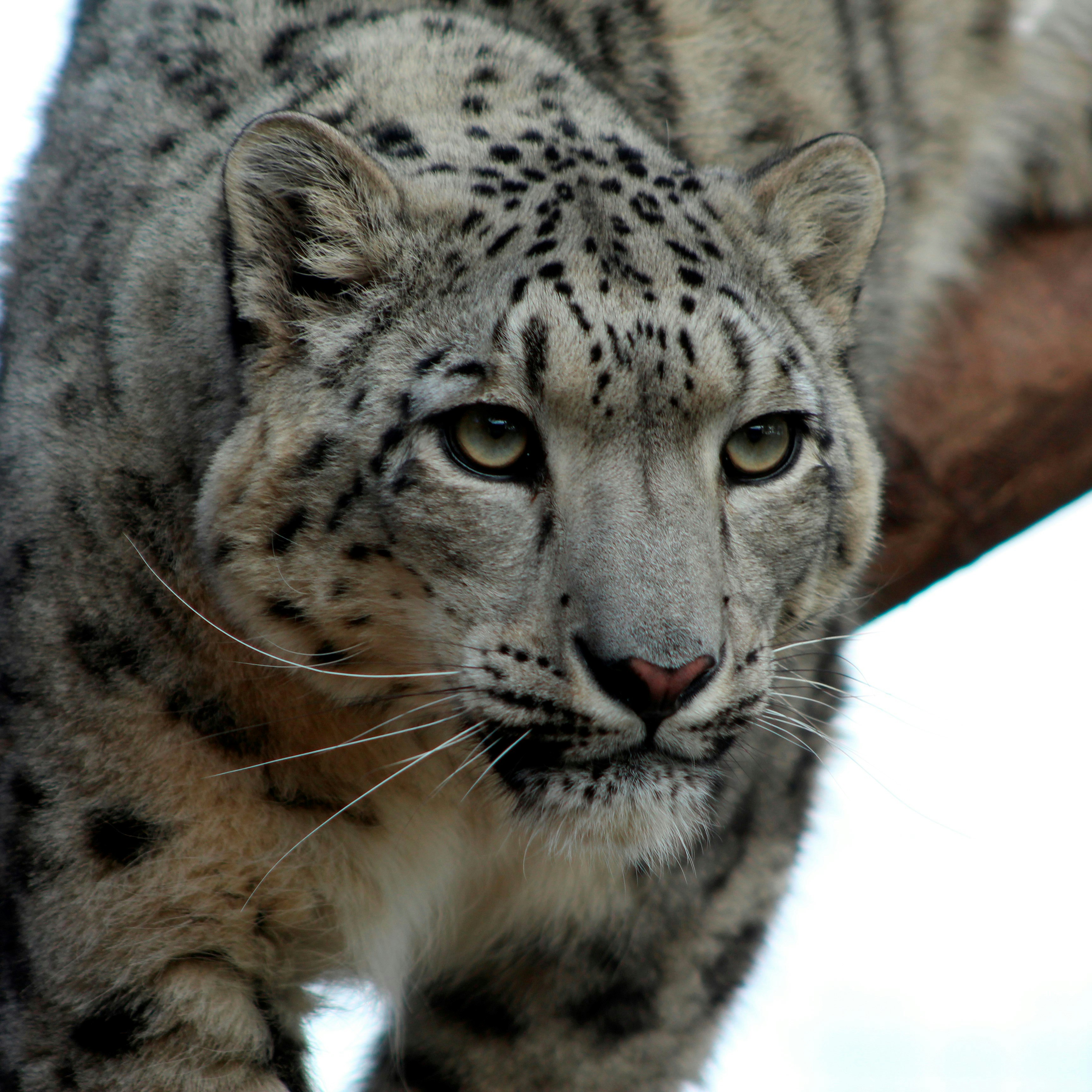
Highland Wildlife Park
The Cairngorms
This place features a drive-through safari park as well as animal enclosures offering the chance to view rarely seen native wildlife, such as wildcats,…
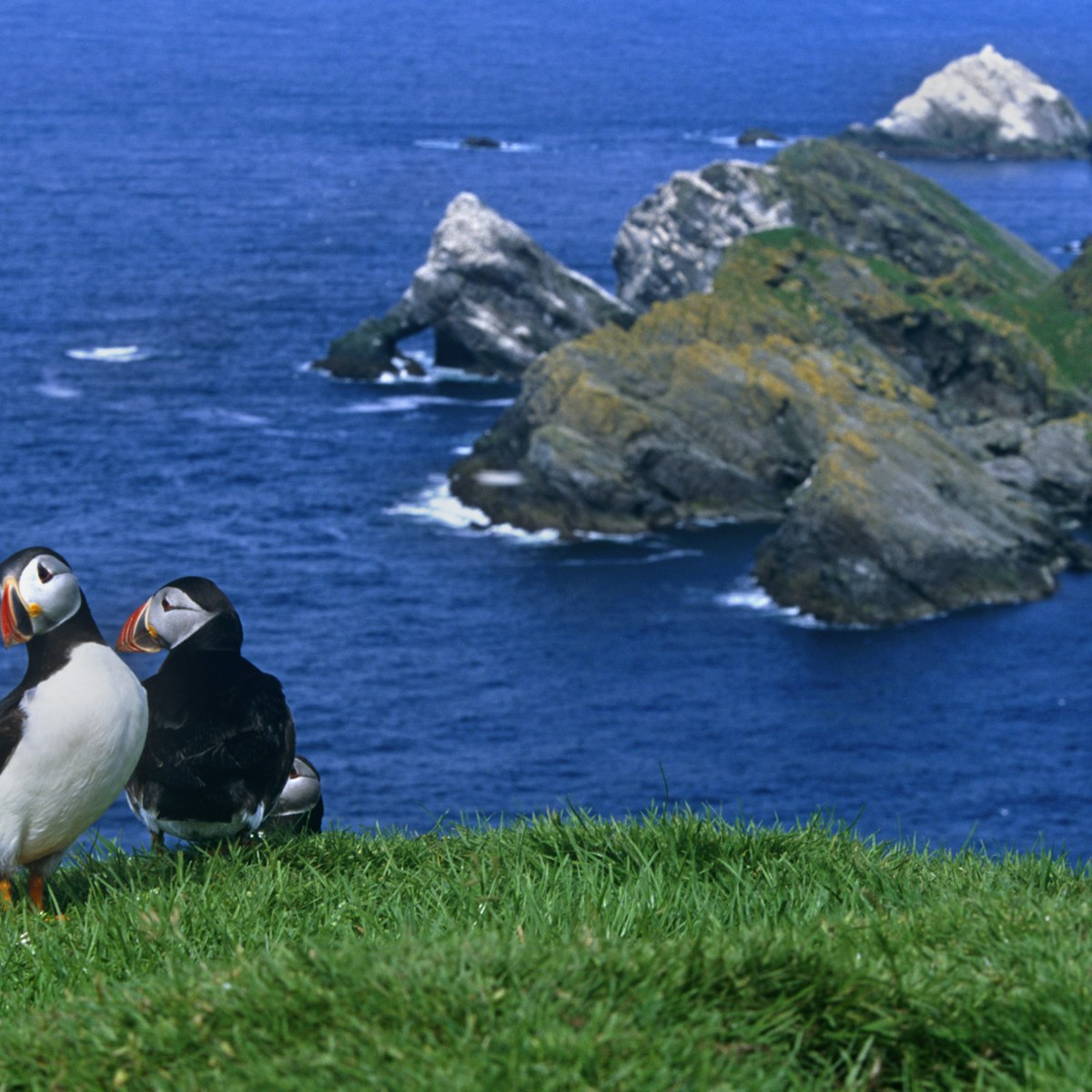
Hermaness National Nature Reserve
At marvellous Hermaness headland, a 4.5-mile round walk takes you to cliffs where gannets, fulmars and guillemots nest, and numerous puffins frolic. You…
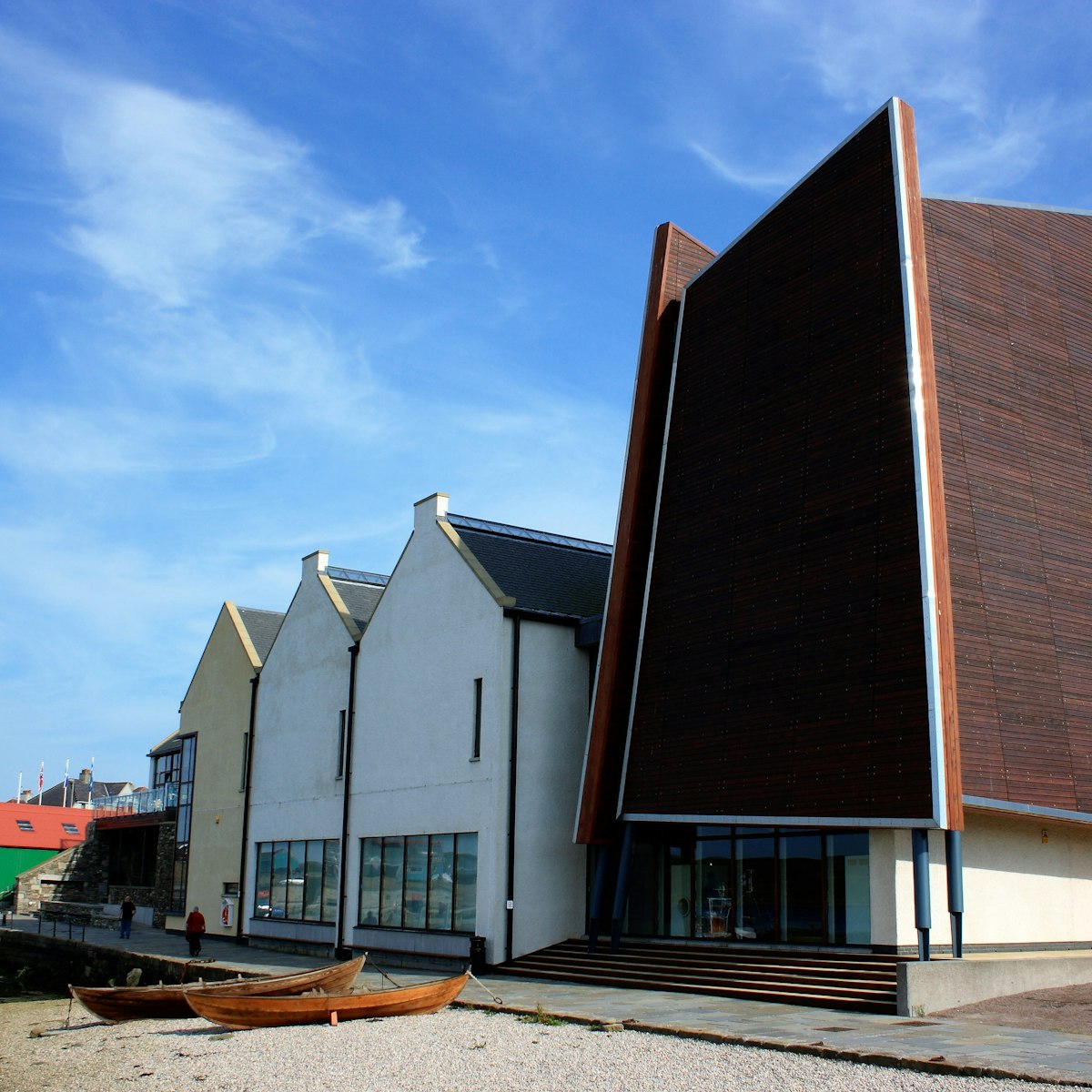
Shetland Museum
This museum houses an impressive collection of 5000 years’ worth of culture, people and their interaction with this ancient landscape. Comprehensive but…
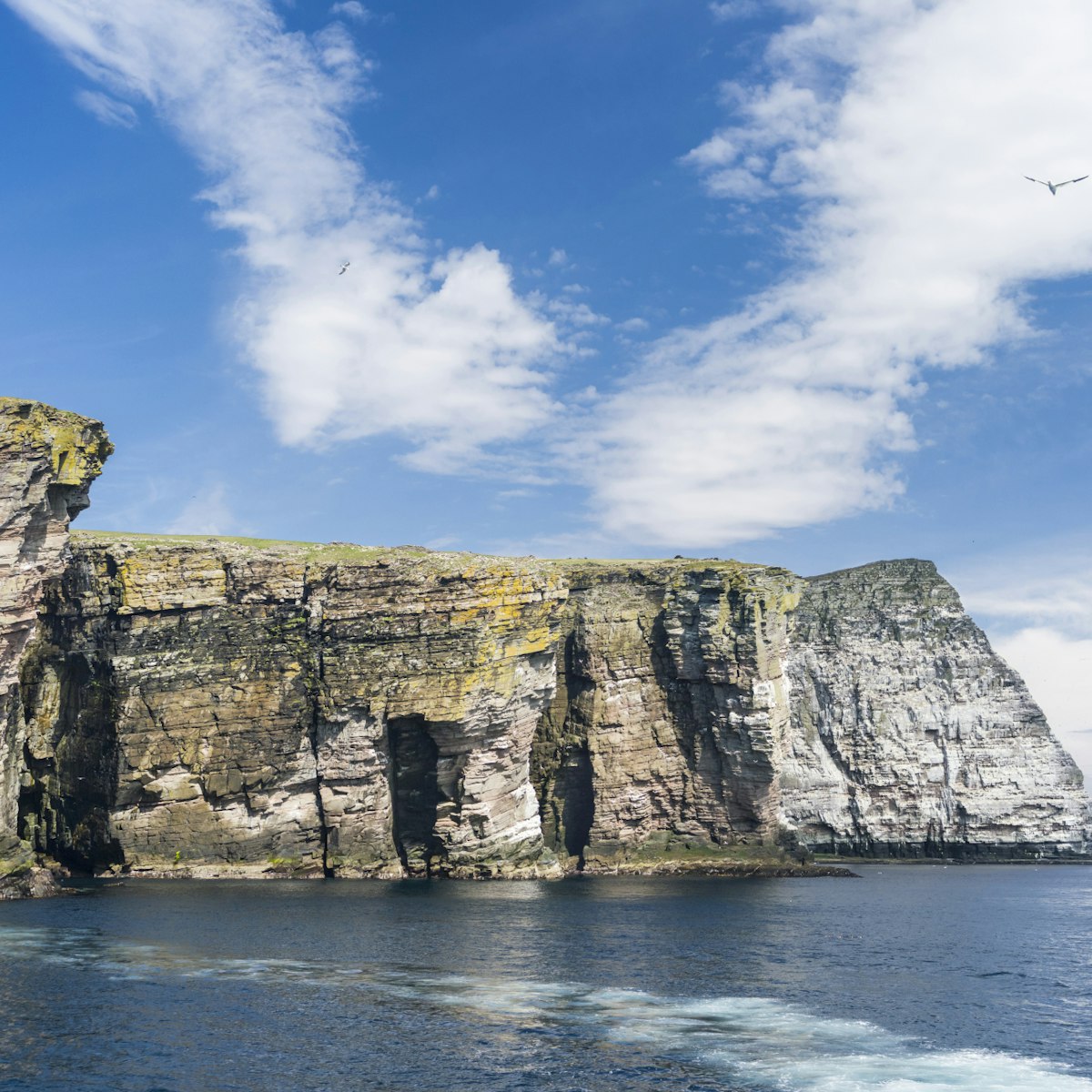
Isle of Noss
Little Noss, 1.5 miles wide, lies just east of Bressay. High seacliffs harbour over 100,000 pairs of breeding seabirds, while inland heath supports…
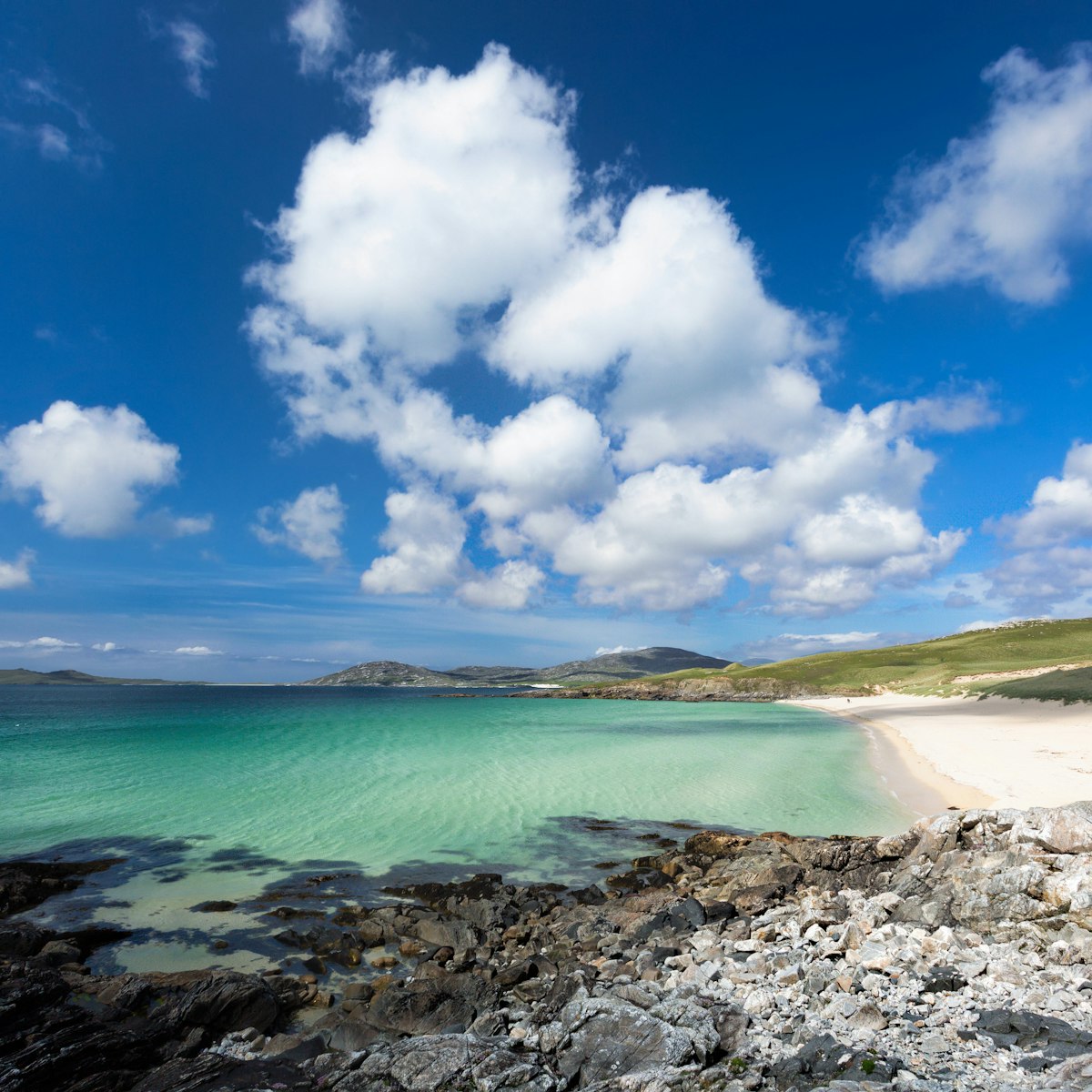
Outer Hebrides
Luskentyre is one of the biggest and most beautiful beaches in Scotland, famed for its acres of low-tide white sands and turquoise waters. A minor road…

Three miles from Port Askaig, tumbledown ruins of houses and a chapel on an islet in a shallow loch mark what remains of the stronghold of the Lords of…
Plan with a local
Experience the real Scotland
Let a local expert craft your dream trip.
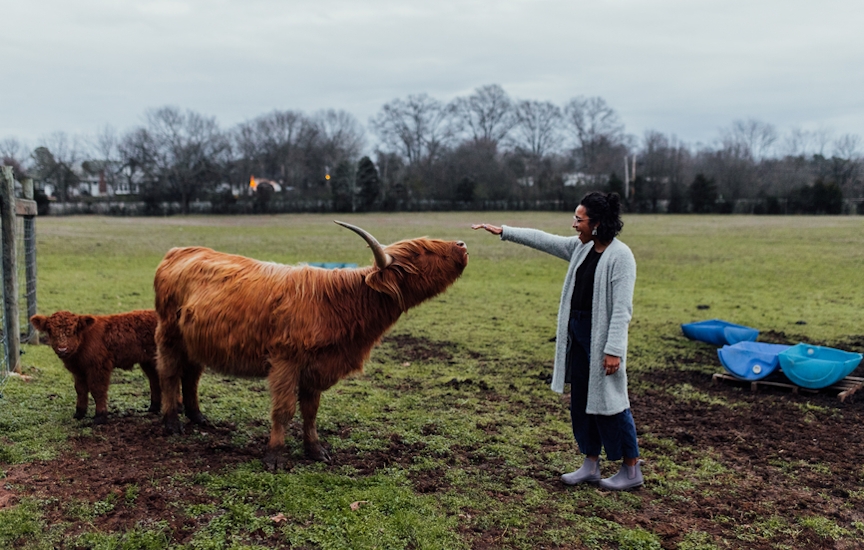
Latest stories from The Highlands & Islands
Filter by interest:
- All Interests
- Adventure Travel
- Art & Culture
- Beaches, Coasts & Islands
- Food & Drink
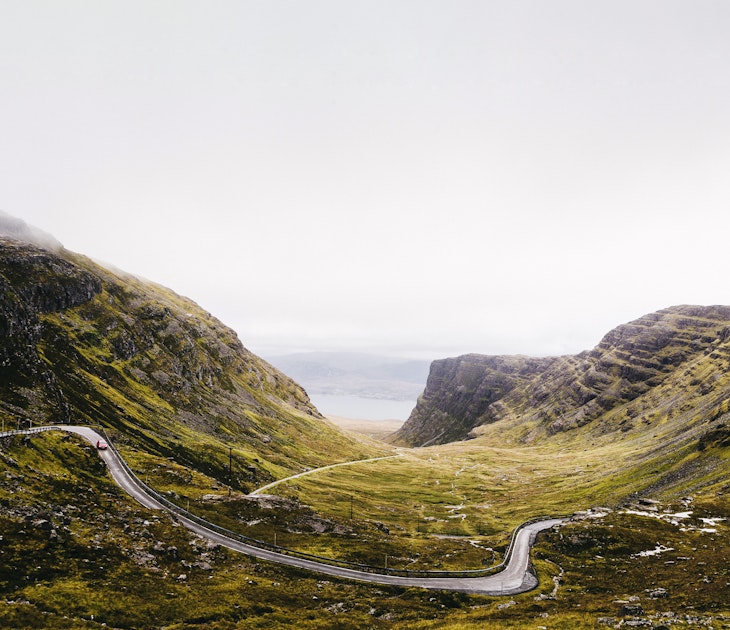
Sep 10, 2020 • 10 min read
The North Coast 500 is Scotland’s very own Route 66. Buckle up for a road trip around Britain’s outer limits, where you’ll find otherworldly landscapes.

Aug 9, 2017 • 7 min read
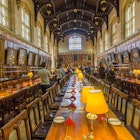
Jan 23, 2017 • 6 min read
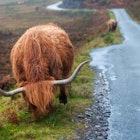
Sep 23, 2013 • 6 min read
Purchase our award-winning guidebooks
Get to the heart of The Highlands & Islands with one of our in-depth, award-winning guidebooks, covering maps, itineraries, and expert guidance.
The Highlands & Islands and beyond
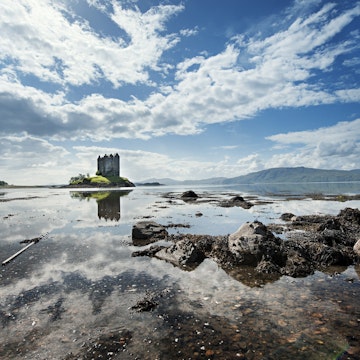
Scottish Highlands

- 2 Understand
- 3.1 By plane
- 3.2 By rail
- 3.4 By road
- 4 Get around
The Scottish Highlands are the rugged northern and northwestern portion of Scotland . This is the Scotland conjured up by visions of tartan, kilts, Bonnie Prince Charlie and all.
Regions [ edit ]

Understand [ edit ]

The geographical division between Highland and Lowland Scotland is sharply diagonal, so Campbeltown in the far west is further south than Berwick-upon-Tweed in England, while northerly Stonehaven is a continuation of the lowland coastal plain. The Romans marched that far northeast before shrugging at the useless prospect and retrenching south to leave the Picts to their bogs, blizzards and coarse oatmeal. The cultural division is even further north, as lowland farming and industry, the English language and Victorian railways penetrated the valleys and turned the corner above Aberdeen to approach Inverness. The Highlands described on this page largely reflect that cultural boundary.
Alba, the proto-state forerunner to Scotland, arose in the lowlands in the 9th century, conquering the Highland kingdom of Moray (ruled by Macbeth), Gaelic-Ulster Dál Riata, and last of all the Viking / Norse realms of the far west and north in the 13th century. Battles continued with a ferocity out of all proportion to the poor rugged land they were fought over, with the final set-to (taking most of an hour) at Culloden in 1746. This shattered not only the Jacobite cause, but also a samurai feudal way of life and death, with sword-fealty to the chieftain obsolete in England since Norman times. The Highlands were militarised in the wake, with a large army base established at Nairn , and other forts were rebuilt.
The Victorians brought many innovations to the Highlands, and the most important was tourism, as black sucking peat-bogs were rebranded as romantic scenery of "dreary melancholy". This infused Loch Lomond and the Trossachs, the Tay and Dee valleys, then beyond across the Highlands. The Gaelic language died out in this region, to persist in the Hebrides. The burgeoning lowland cities created a mass leisure market, free time and transport links. The 20th century capitalised on this with winter sports and wildlife, and the 21st created eco-angst, the reindeer, beaver and wildcats being the beneficiaries, while ghosts of extinct wolves lope hopefully in the shadows.
Get in [ edit ]
By plane [ edit ].
55.8645 -4.432 1 Glasgow Airport ( GLA IATA ) is best landing point for Argyll and Bute. It has good domestic connections and direct flights across Europe. Glasgow has daily flights to Campbeltown, Wick, the Hebrides, Orkney and Shetland. The airport is west of the city so you drive onto M8 then cross Erskine Bridge northbound, without getting snarled in the centre.
Further north, it's equally convenient to use Glasgow or Edinburgh Airport ( EDI IATA ), which likewise has excellent connections and is west (hence clear) of that city.
Inverness Airport ( INV IATA ) is closest, with international flights from Amsterdam, Dublin and Düsseldorf, and UK flights from London LHR, Manchester, Kirkwall (Orkney), Sumburgh (Shetland) and Stornoway (Lewis).
By rail [ edit ]
Scotrail trains run every couple of hours from Glasgow and Edinburgh via Perth and Aviemore to Inverness. Change at Inverness for trains west to Kyle of Lochalsh (for Skye), north to Wick and Thurso (for Orkney) and east towards Aberdeen.
Trains also run from Glasgow up the West Highland Line via Arrochar & Tarbet (for Loch Lomond) and Crianlarich, where the train divides for Oban (for Mull, Coll, Tiree and Colonsay), or for Fort William and Mallaig (for Skye and the Small Isles).
Travelling from England usually means changing in Edinburgh or Glasgow, but one train per day is direct from London Kings Cross via Edinburgh to Inverness.

The Caledonian Sleepers run from London Euston via Preston and Carlisle: sleeping berths and saloon seats are available, and reservations are compulsory. The Lowland Sleeper runs to Edinburgh and Glasgow, the Highland Sleeper divides in the small hours for Aberdeen, Inverness and Fort William. It serves intermediate stations such as Perth and Arrochar & Tarbet in the early hours, and the connection for Oban is tedious, so for those you might prefer to change in Glasgow for a daytime train.
By bus [ edit ]
From London Victoria, National Express and Megabus run daily to Edinburgh and Glasgow, and you usually have to change to reach the Highlands.
Citylink are the main bus line into the Highlands. Their routes from Glasgow and Edinburgh are:
West Coast Motors , Parks of Hamilton, Stagecoach and Megabus compete or collaborate on these routes.
Change at Inverness for Citylink buses to Fort William, Skye, Ullapool and Thurso.
By road [ edit ]

The principal roads, followed by the buses, are:
There are no motorways this far north, and roads are mostly undivided highways busy with trucks at all hours, and where overtaking can be hazardous.
Bicycles are permitted on all these roads, but except for a few loops of bypassed historic highway you have to use the main carriageway, with fast traffic blurring past sometimes in limited visibility.
Get around [ edit ]
Trains and buses on the inter-city routes link the main towns but are of limited help for the villages. For instance at Glencoe, the Glasgow-Fort William bus only traverses the glen four times a day. A local bus plies six times a day from Fort William to Ballachulish, Glencoe village and Kinlochleven but doesn't go up the glen to the ski resort or trailhead for the West Highland Way.
Most visitors bring their own vehicle. Car hire is best arranged from the airports.
Highways are undivided, traffic builds up behind the slow fellow towing a caravan (with left-hand drive and limited visibility if he's from the continent), and overtaking is hazardous. It may be easier in the more remote areas with single track lanes, since the passing places are also used for overtaking. But then the motorcade that's built up behind the slow caravan meets a similar motorcade coming the other way, the passing place only fits three vehicles, and the resultant shunt-back will occupy many a happy hour.
Highland motorists are often willing to pick up hitchhikers who don't look too weird or muddy.
See [ edit ]

- Castles for the most part are sternly defensive but tumbledown. Great examples are Eilean Donan at Dornie and Urquhart Castle at Drumnadrochit by Loch Ness. Luxury castles (Victorian gin-palaces with twiddly bits to make them look medieval) are Dunrobin Castle at Golspie and Castle of Mey near John o'Groats , plus the Georgian Inveraray . McCaig's Tower above Oban is a Victorian folly.
- Gardens: every west coast promenade is studded with palm trees shivering in the rain to make a point about the balmy Gulf Stream. What grows better is Himalayan species, and you know you're within five miles of a stately mansion when you encounter their escaped rhododendrons, a riot of colour in May. The standout gardens are Inverewe near Gairloch , Arduaine near Oban and Crarae near Inveraray .
- Deserted landscapes: the rural Highland population was once greater, but they left or were driven out. Haunting Glencoe was a 17th-century example, and Auchendrain near Inveraray depicts farmhouse life before the big exodus of the 18th and 19th centuries. On several hillsides you see abandoned villages, and at Helmsdale the reverse: the makeshift village erected by those evicted from their crofts, before they despaired and headed to the lowland cities.
- Prehistoric structures have mostly been obliterated by agriculture, the best are in the Hebrides and Orkneys, but there's a fine collection around Wick. Most common were "Duns" - fortified outcrops, often on the coast. They're scrappy and you mostly come for the sea view.
- Islands involving a ferry ride are described elsewhere as part of the Hebrides, Orkneys or Shetland, but The Summer Isles are an example of an inshore archipelago, reached by boat trip from Achiltibuie . Unique within the UK are the "mainland islands", settlements and drivable lanes that have no road connection to the mainland network. The most populated is Knoydart , reached by ferry from Mallaig or by a very long hike across the moors. Several others such as Applecross were only connected in the late 20th century.
Do [ edit ]
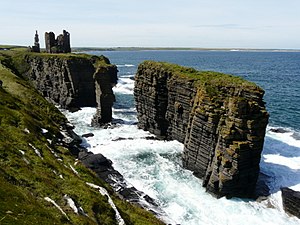
- Long-distance walks include the West Highland Way , 96 miles from Milngavie to Fort William, and the Great Glen Way , 73 miles from Fort William to Inverness. The Lairig Ghru is 19 gruelling miles from Speyside to Deeside.
- Mountains, oddly enough, are why this region is called the Highlands. A mountain above 3000 feet / 914.4 m is called a Munro, for the Victorian beard who first catalogued them. There are 282 of these and 226 secondary "tops", and "Munro-bagging" is a popular weekend pastime. A mountain between 2500 and 3000 feet is called a Corbett and there are 222 of these. The principal groups are:
- Take a steam train excursion along the West Highland Line from Fort William to Glenfinnan, Arisaig and Mallaig, or along the Strathspey Railway from Aviemore to Boat of Garten.
- Ski at Glencoe above Braemar , or Cairngorm above Aviemore, or Nevis Range above Fort William.
- Spot dolphins and whales in the Moray Firth: boat trips sail from Inverness.
- In Cairngorms National Park you might spot beaver, reindeer or even a wildcat.
- North Coast 500 is a motoring itinerary of 500-or-so miles from Inverness to the northwest coast, north coast, John o'Groats and return to Inverness.
- Highland Games are held in each town in turn over summer, sometimes combined with agricultural shows.
Eat [ edit ]
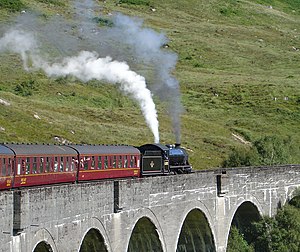
Even small places have a takeaway chippy or pizzeria, but sit-down eating opportunities are limited away from the towns. Pub grub or the town hotel may be the best bet; their kitchen may take last orders at 8pm or earlier so don't linger.
Vegetarian / vegan and GF choices are much easier to find nowadays.
Drink [ edit ]
The towns have traditional pubs, but village stand-alone pubs have withered - try the hotel bar / restaurant.
There are a few breweries and multiple whisky distilleries in the Highlands. Classic whisky country is the Spey Valley.
Small artisan gin distilleries have popped up all over, probably more than the market can sustain, so sample them now while you can.
Sleep [ edit ]
Accommodation is scanty in relation to the number of visitors: it alternates between being full for summer holidays, and closed for winter. Schools and universities make block bookings at Easter and mid-term break. You might be able to rock up and find a place in shoulder season, but it's always best to book well ahead.
Go next [ edit ]
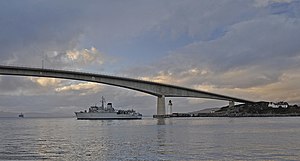
The Scottish islands are the obvious next regions to explore. Each large island is a destination in its own right, and transport routes radiate from the mainland, so don't plan on seeing multiple islands in a single trip.
- The Hebrides lie off the northwest coast, and for a first-time visit pick one of the larger islands of the Inner Hebrides , such as Skye (linked by toll-free road bridge), Mull , Islay or Tiree .
- The Orkney Islands are a low-lying, scenic archipelago ten miles north of the mainland, where the heritage is Norse not Gaelic.
- The Shetland Islands are further north, with treeless haunting scenery, and even stronger Norse heritage.
North East Scotland starts just across the Firth from Edinburgh. Some is industrial but it's dotted with fishing harbours and castles, from the grand to the tumbledown, with charming St Andrews , rejuvenated Dundee , and chief city Aberdeen .
The Central Belt is the lowland urban area to the south: both Edinburgh and Glasgow rank as must-see.
- Has custom banner
- Has map markers
- Has mapframe
- Maps with non-default size
- Has Geo parameter
- Usable regions
- Usable articles
- Region articles
- All destination articles
- Pages with maps
Navigation menu

IMAGES
VIDEO